Disgustingly Beautiful Mold Art
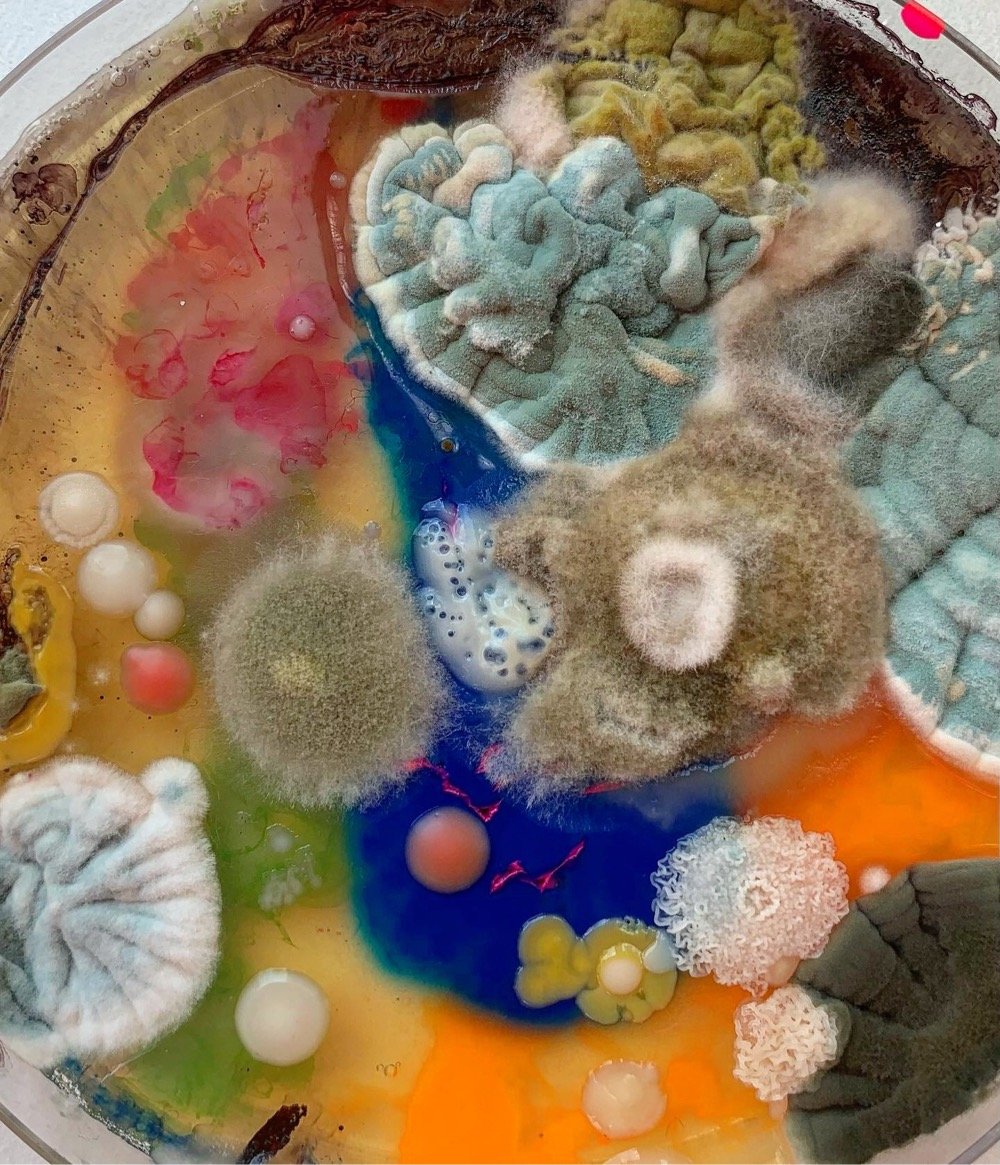

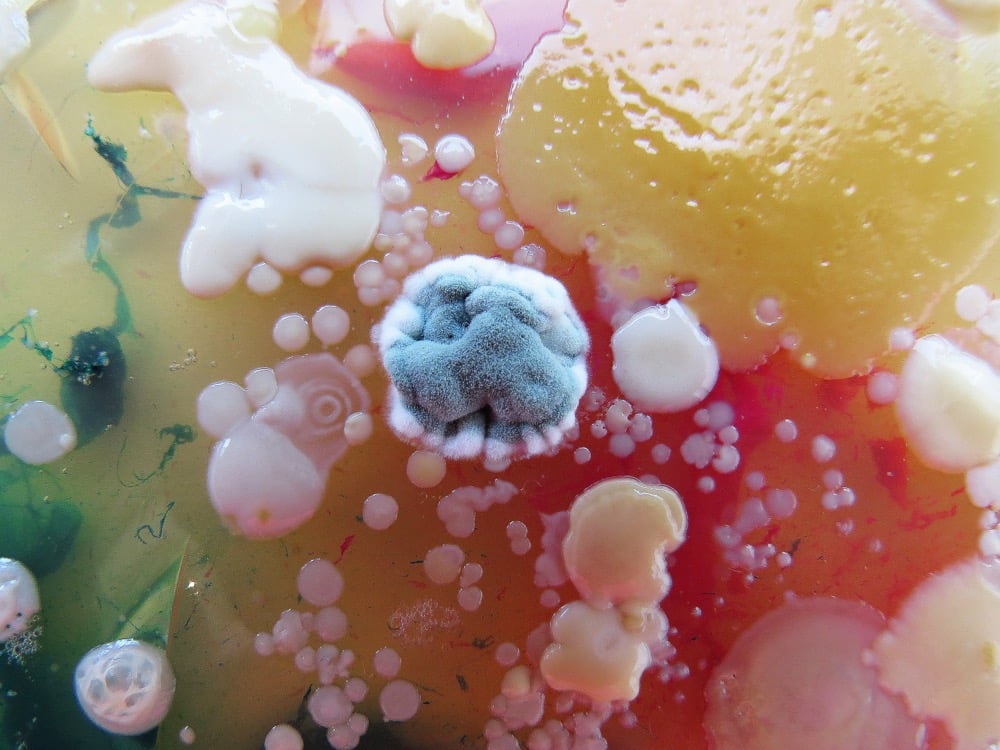

Artist Dasha Plesen combines molds, bacteria, spores, and other objects in petri dishes to create these colorful abstract photographs. You can find more of her work on Behance and Instagram. (via neatorama)



This site is made possible by member support. ❤️
Big thanks to Arcustech for hosting the site and offering amazing tech support.
When you buy through links on kottke.org, I may earn an affiliate commission. Thanks for supporting the site!
kottke.org. home of fine hypertext products since 1998.




Artist Dasha Plesen combines molds, bacteria, spores, and other objects in petri dishes to create these colorful abstract photographs. You can find more of her work on Behance and Instagram. (via neatorama)
The Odyssey of Star Wars, a retelling the Star Wars saga in the style of classic epic poetry. “I look not to myself but to the Force, / In which all things arise and fall away.”
An excerpt from Bourdain: The Definitive Oral Biography. This was tough to read.
An Unsung Female Pioneer of Computer Simulation. Mary Tsingou Menzel helped create the field of nonlinear science.
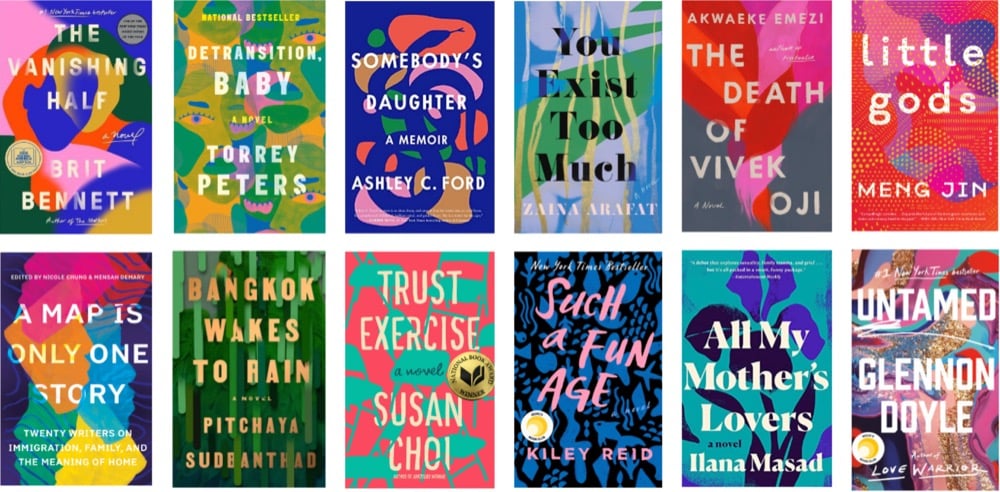
Over at Print, R.E. Hawley writes about a book cover design trend you may have noticed: Behold, the Book Blob.
This design trend, well into its third or fourth year in the major publishing houses, has attracted plenty of nicknames and attendant discourse online — culture critic Jeva Lange calls it “blobs of suggestive colors,” while writer Alana Pockros calls it the “unicorn frappuccino cover,” and New Yorker writer Kyle Chayka once referred to it on Twitter as “the Zombie Formalism of book covers.”
I hadn’t really noticed this, but only because I thought these were all mostly the same book. Eep.
Every few days, Nenet reindeer herders in the Siberian Arctic break camp and erect their tents (called chums) in a new location. This video documents how they do it.
The Nenet reindeer herders need to move their tent every few days throughout most of the year. Every time they migrate they must pack the whole tent away, drag it across the tundra on sledges, and erect it again in a fresh place, sometimes in temperatures of minus thirty degrees. Survival depends on working together as a team.
After staying in the wooded taiga for two months they start to migrate north following the ancient paths of migrating reindeer (caribou). In four months they will travel up to 1200km and must pack and move every three to five days to keep up with their herd. They must reach their summer quarters before the snows melt and flood great rivers with icy waters too cold and deep for the calves, born along the way, to cross.
See also How to Build an Igloo. (via the kid should see this)
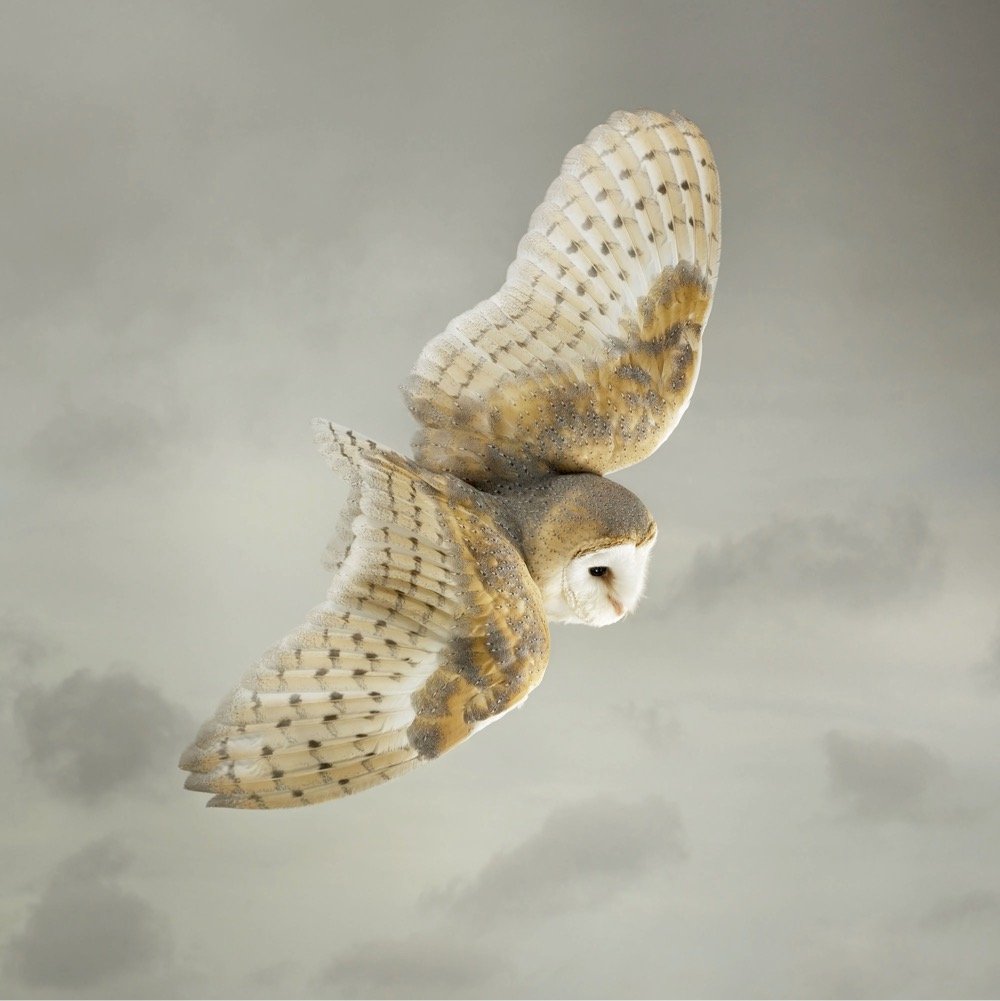
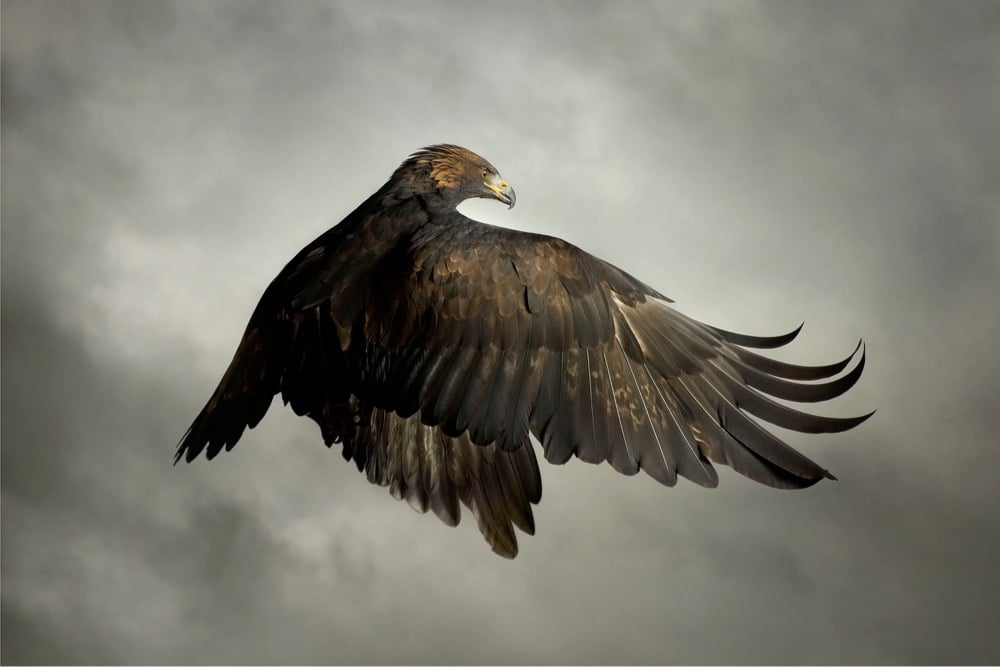
Colossal has a selection of photos of predatory birds taken by Mark Harvey — prints are available in his shop.
Shot with his signature style that applies a hearty dose of drama to the already striking creatures, the photos are shot one at a time in a slow, medium format. “Lighting is a key aspect of my work to help draw out fresh views of well-known subjects, and these birds are no exception, set within an intricate lighting setup to ultimately show the birds in a new light,” Harvey shares. “With their wings spread wide, these top avian predators’ beauty is put on full display.”
This video highlights one of the ways in which the Netherlands makes their streets safer for pedestrians: continuous sidewalks. Instead of sidewalks ending at the curb and picking up on the other side of the street, many sidewalks in Dutch cities continue across roadways, at the same height and using different surface materials, forcing cars to slow and signaling to drivers to be alert for pedestrians.
It’s hard to describe how much nicer it is to walk in an environment like this. It feels like the people walking are in control and that drivers are a guest in their environment, not the other way around.
(via @davidfg)
HERMITS are tiny experimental robots developed by researchers at MIT’s Media Lab that can move between different “shells” to gain new capabilities.
Inspired by hermit crabs, we designed a modular system for table-top wheeled robots to dock to passive attachment modules, defined as “mechanical shells.” Different types of mechanical shells can uniquely extend and convert the motion of robots with embedded mechanisms, so that, as a whole architecture, the system can offer a variety of interactive functionality by self-reconfiguration.
(via fast company)
This story broke right through my pandemic numbness – I’m almost shaking in rage. Please PLEASE get vaccinated and start taking Covid seriously.
Ed Yong: We’re Already Barreling Toward the Next Pandemic. The US is throwing too little money at high-tech, ultimately private sector solutions but much of the problem comes down to our underfunded public health system and “profoundly unequal society”.
“To be ready for the next pandemic, we need to make sure that there’s an even footing in our societal structures,” Seema Mohapatra, a health-law expert at Indiana University, told me. That vision of preparedness is closer to what 19th-century thinkers lobbied for, and what the 20th century swept aside. It means shifting the spotlight away from pathogens themselves and onto the living and working conditions that allow pathogens to flourish. It means measuring preparedness not just in terms of syringes, sequencers, and supply chains but also in terms of paid sick leave, safe public housing, eviction moratoriums, decarceration, food assistance, and universal health care. It means accompanying mandates for social distancing and the like with financial assistance for those who might lose work, or free accommodation where exposed people can quarantine from their family. It means rebuilding the health policies that Reagan began shredding in the 1980s and that later administrations further frayed. It means restoring trust in government and community through public services. “It’s very hard to achieve effective containment when the people you’re working with don’t think you care about them,” Arrianna Marie Planey, a medical geographer at the University of North Carolina at Chapel Hill, told me.
In 1976, Santos “Frenchie” Ramos opened a gym in Williamsburg, Brooklyn. Every day of his life from that point forward was dedicated to that gym and to his members. In the gym’s 43-year history, Frenchie only missed two weeks of work; now that’s dedication.
Jackie Chan breaks down how he choreographs fight scenes in his action/comedies. “I want the fighting to be like dancing.”




Check out these iconic album covers rendered in Lego by Adnan Lotia on Instagram. (thx, jenni)
Anita Hill: What It Was Like for Me to Watch Christine Blasey Ford’s Testimony. “With some of the same senators from 1991 sitting on the Judiciary Committee…I could not bring myself to be optimistic that the entire committee had evolved.”
Behold, I Have Returned from a Hike! “I’ve moved beyond the world you live in. I cut the tether. It was just me, the great outdoors, and the phone I relied on heavily for navigation, documentation, and a podcast…”
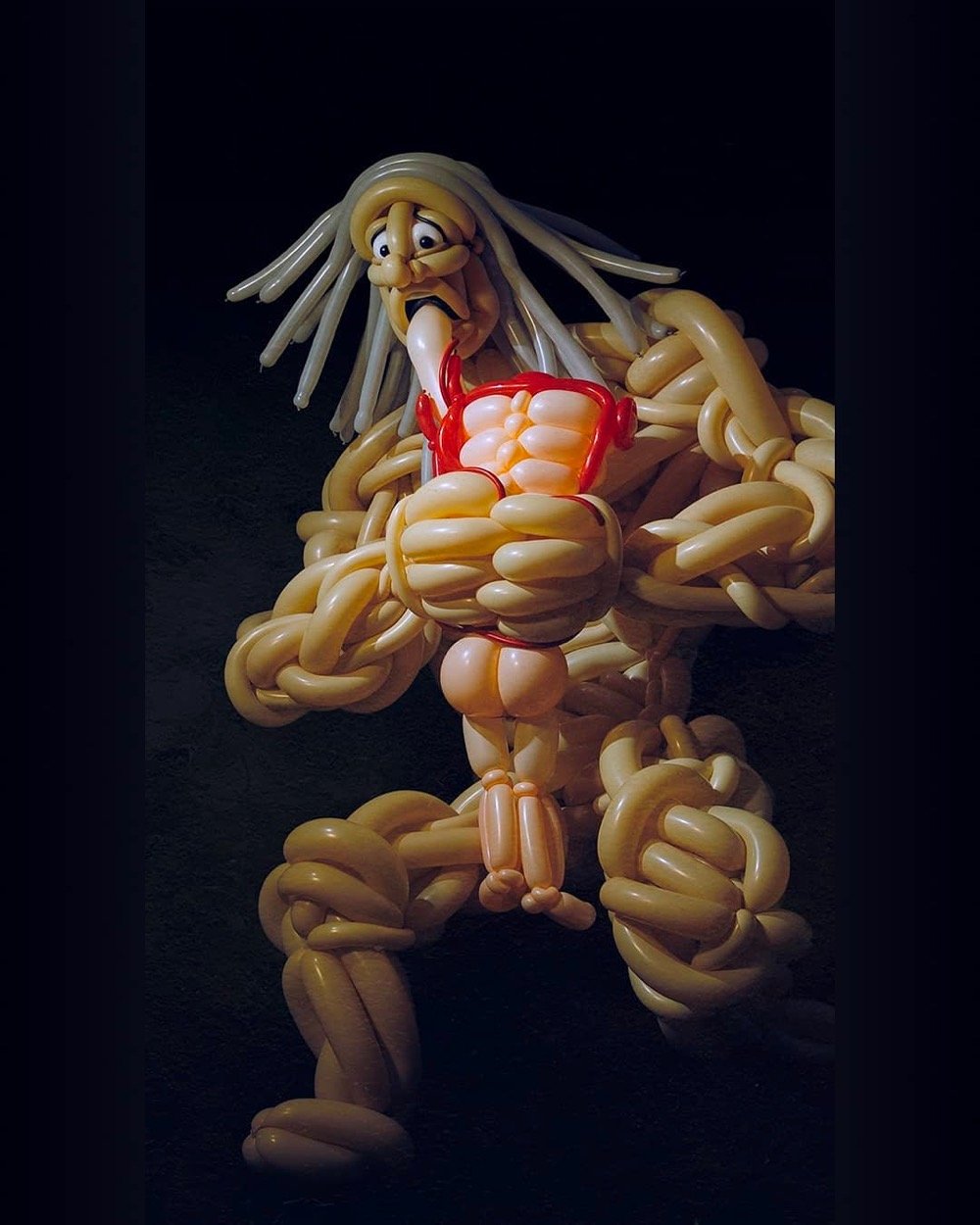
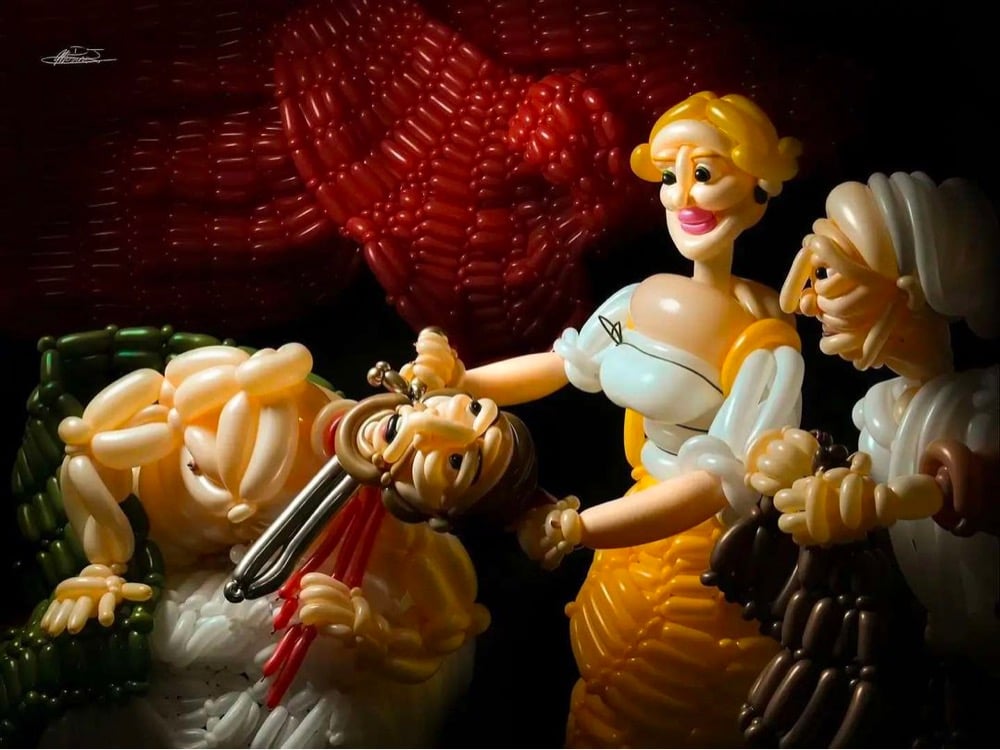
Balloon artist DJ Morrow has been branching out recently. Morrow makes elaborate balloon animals and other things but two of his latest creations are his amazing interpretations of Francisco Goya’s Saturn Devouring His Son and Judith Beheading Holofernes by Caravaggio. I can’t stop looking at these. And prints are available! (thx, caroline)
My Time with Kurt Cobain. “I had the distinct feeling that Kurt would not live a long life. But what, if anything, could I do about it? Was it even my place to get involved?”
I don’t know anything about this film but if you like PT Anderson, you’ll probably like this. From the synopsis:
“Licorice Pizza” is the story of Alana Kane and Gary Valentine growing up, running around and falling in love in the San Fernando Valley, 1973. Written and Directed by Paul Thomas Anderson, the film tracks the treacherous navigation of first love.
Limited release in theaters on Nov 26, opens wide on Dec 25.
Red Covid. “Covid is still a national crisis, but the worst forms of it are increasingly concentrated in red America.”

Hey all. Today is my birthday and the boss has given me the day off. I’m gonna spend time with some of my favorite humans, start a book I’ve been looking forward to reading, eat some good food, and, if it stops raining, go for a bike ride. I’ll see you back here tomorrow, bright eyed and bushy tailed.
Laura Olin is right; this recorded lunch conversation with Orson Welles from 1983 is well worth a read. I mean:
Waiter: Gentlemen, bon appétit. How is everything?
O.W.: We’re talking, thank you. [Waiter leaves.] I wish they wouldn’t do that. If I ever own a restaurant, I will never allow the waiters to ask if the diners like their dishes. Particularly when they’re talking.
H.J.: What is wrong with your food?
O.W.: It’s not what I had yesterday.
H.J.: You want to try to explain this to the waiter?
O.W.: No, no, no. One complaint per table is all, unless you want them to spit in the food. Let me tell you a story about George Jean Nathan, America’s great drama critic. Nathan was the tightest man who ever lived, even tighter than Charles Chaplin. And he lived for 40 years in the Hotel Royalton, which is across from the Algonquin. He never tipped anybody in the Royalton, not even when they brought the breakfast, and not at Christmastime. After about ten years of never getting tipped, the room-service waiter peed slightly in his tea. Everybody in New York knew it but him. The waiters hurried across the street and told the waiters at Algonquin, who were waiting to see when it would finally dawn on him what he was drinking! And as the years went by, there got to be more and more urine and less and less tea. And it was a great pleasure for us in the theater to look at a leading critic and know that he was full of piss. And I, with my own ears, heard him at the ‘21’ complaining, saying, “Why can’t I get tea here as good as it is at the Royalton?” That’s when I fell on the floor, you know.
And this bit, about how people used to treat going to the movies like reading a magazine or flipping on the TV, is fascinating:
H.J.: Warren Beatty was just saying that TV has changed movies, because for most of us, once you’re in a movie theater, you commit, whether you like it or not. You want to see what they’ve done, while at home …
O.W.: I’m the opposite. It’s a question of age. In my real moviegoing days, which were the thirties, you didn’t stand in line. You strolled down the street and sallied into the theater at any hour of the day or night. Like you’d go in to have a drink at a bar. Every movie theater was partially empty. We never asked what time the movie began. We used to go after we went to the theater.
H.J.: You didn’t feel you had to see a movie from the start?
O.W.: No. We’d leave when we’d realize, “This is where we came in.” Everybody said that. I loved movies for that reason. They didn’t cost that much, so if you didn’t like one, it was, “Let’s do something else. Go to another movie.” And that’s what made it habitual to such an extent that walking out of a movie was what for people now is like turning off the television set.
I don’t know if a 10-second sequence of a plane landing in one of Brian De Palma’s worst films properly qualifies as “The Most Difficult Shot in Movie History”, but the story behind it is genuinely interesting. The logistics of having only 30 seconds out of an entire year to get this exact shot of the setting sun and coordinating that with a landing supersonic jet at one of the world’s busiest airports are certainly daunting. As Patrick Willems notes in his commentary, this shot also signifies the end of an era in the film industry.
Adam Serwer writes about the five clear ways in which Trump and the Republicans tried to overturn the 2020 election in a coup. The Eastman memo is astoundingly straightforward about it.
As part of the Great Green Wall initiative, Senegal has been building circular, drought-resistant gardens to keep the Sahara desert from spreading any further. The Kid Should See This explains how they work:
These Senegalese farmers plant the spiraling gardens with a plan to hold water: Medicinal plants in the inner circle, three rows of vegetables, with fruit and nut trees next. The outer circles are created with large baobab trees and African mahogany trees.
The Diamond is a contemplative short documentary by Caitlyn Greene about the people who look for diamonds in an ancient volcanic crater at the Crater of Diamonds State Park in Arkansas. Whatever you find there, you can keep. But what are they really searching for?
I came across an article about the Crater of Diamonds State Park in Arkansas, which I learned is the world’s only public diamond-bearing site. People from all walks of life search for diamonds atop this ancient volcanic crater, and it’s finders keepers. Some people find substantial diamonds, some don’t, and either way, it takes a lot of digging in the dirt. I was immediately hooked on the metaphor of this place.
I was interested in the hope of treasure, the grittiness of searching, and what people there were actually looking for in their lives. Creatively, I wanted to push an interview-driven piece, especially one in which subjects are given freedom to take you where they want to go, rather than guiding interviews along a plot-driven track. Errol Morris’ Vernon, Florida was a huge inspiration for this approach.
That loudspeaker announcement right at the beginning is surreal — a great way to set the tone for the rest of the film.
Astronomers have found a potential remnant nebula for a supernova recorded by Chinese and Japanese astronomers in 1181 CE. “This sighting in 1181 CE is the only one in the past millennium not to have an associated nebula…with it.”
How America’s hottest city is trying to cool down. There are solutions to climate challenges in cities (more trees!), but as efforts in Phoenix show, the poorest areas often get short shrift.
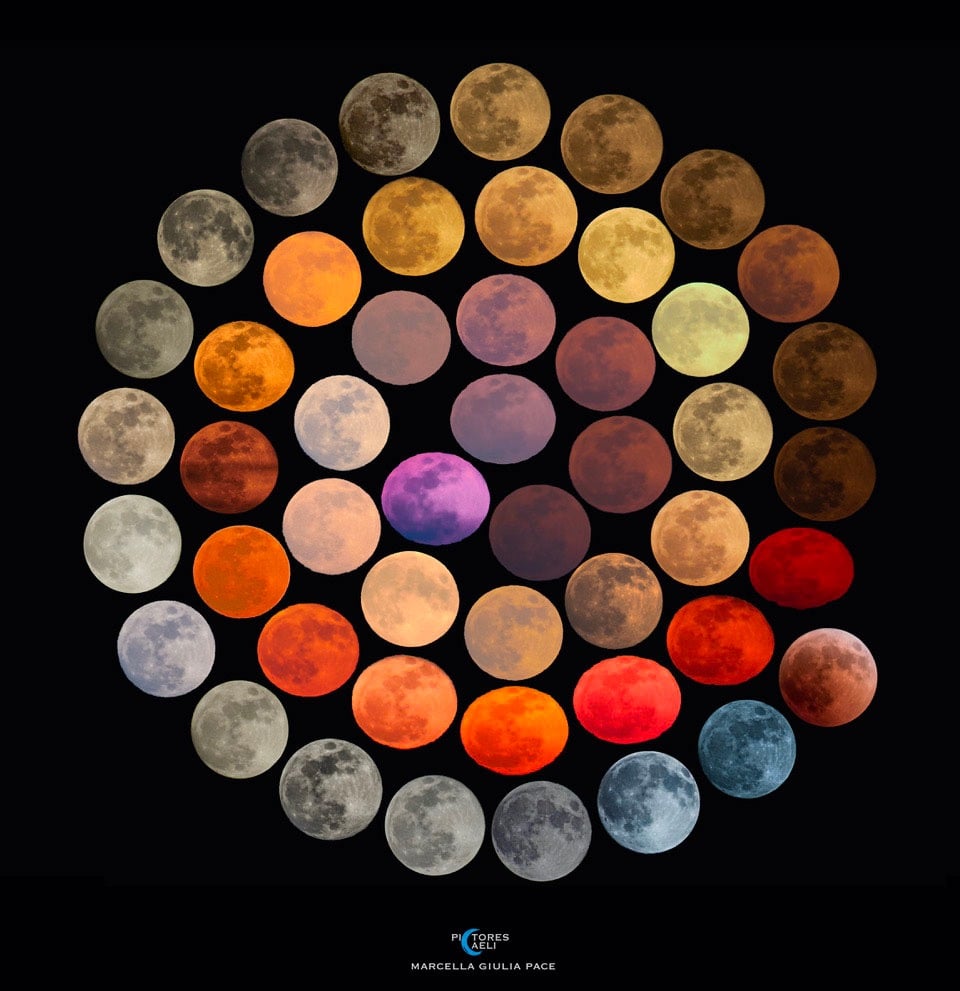
Marcella Giulia Pace photographed the Moon in 48 different hues and arranged them in a lovely spiral pattern.
I have collected some of my Full Moon shots taken over the past 10 years. I selected the shades of color with which the Moon was filmed in front of my lens and my eyes.
The atmosphere gives different colors to our satellite (scattering) based on its height with respect to the horizon, based on the presence of humidity or suspended dust. The shape of the Moon also changes: at the bottom of the horizon, refraction compresses the lunar disk at the poles and makes it look like an ellipse.
Ice Ball is a short documentary that follows legendary polar explorer Will Steger and the community that he’s built up around harvesting ice from frozen winter lakes near Ely in northern Minnesota. Steger lives off the grid and uses the harvested ice for refrigeration — the ice keeps everything cool in the ice house for the whole year, until the next harvest.
Best known for his legendary polar explorations, Will Steger’s life work grew out of a single log cabin he built after moving to the Minnesotan wilderness at age 25. Reliant on sustainable energy and natural commodities, Steger formed a community and culture based on the principle of mutuality. Central to Steger’s operation is the lost art of cutting ice for refrigeration. This annual harvest formed a tradition spanning fifty years that became known as the “Ice Ball”. While this old world technology inevitably became obsolete, its disappearance parallels a concerning loss of social interdependence in modern society.
Come for the ice harvesting, stay for the wonderful Minnesotan accents. (via colossal)
In this video, Michael Pollan explains how caffeine is woven into the fabric of modern society. Here’s the short version of how that came to be: People used to drink a lot of alcohol because water was unsafe, so folks were often in a sort of low-grade stupor. When coffee hit Europe, it provided the stimulation, focus, and energy necessary for people to work better and longer. Voila, the Enlightenment and Industrial Revolution.
You can read more about caffeine in Pollan’s latest book This Is Your Mind on Plants (excerpt here) or in his 2020 audiobook called Caffeine: How Caffeine Created the Modern World.
Unvaccinated Mom Wants To Know If You’re Coming Home For Covid This Year. “After all, Grandma’s going to be here, and contracting this disease together could be the last time we get to see her.”
The largest space telescope in history is about to blow our minds. “The James Webb Space Telescope will be 100 times as powerful as the Hubble. It will change how we see the universe.” I’m ready to be blown.
Betty Reid Soskin is 100 years old today and is the oldest active ranger in the National Park Service. A colleague once once described her as “sort of like Bette Davis, Angela Davis and Yoda all rolled into one”.
Tom Standage, whose The Victorian Internet was hugely influential to me in how to think about the history of technology, is out with a new book on transportation and cars: A Brief History of Motion: From the Wheel, to the Car, to What Comes Next (ebook). In this excerpt, he argues that the world has reached “peak car” — “the point at which car ownership and use level off and start to decline”.
Evidence for peak car in Western countries, meanwhile, has been accumulating for some time. In America, the total number of vehicle miles traveled has continued to increase. But it has been growing more slowly than both the total number of vehicles and the population. The number of miles driven per vehicle, and per person of driving age, both peaked in 2004 and have since fallen to levels last seen in the 1990s. The average distance driven per person per year peaked in the 2000s or earlier in many Western cities including London, Stockholm, Vienna, Houston, and Atlanta. In Australia, Belgium, Britain, France, Germany, Italy, Japan, New Zealand, and Spain, distance traveled per person has been flat or falling since the early 2000s (in Britain, the average motorist drove seventy-six hundred miles in 2018, down from ninety-two hundred in 2002). Miles traveled by car per annum per capita in Italy, Britain, the Netherlands, and Sweden peaked in 2000, 2002, 2004, and 2005 respectively.
See also this interview with Standage in Grist (which features the phrase “horse-drawn transport monoculture”).
The pandemic caused a drop in driving, and then an uptick as people came out of lockdowns and decided, in some cases, that they would rather drive than use public transit. But the longer-term trend seems clear: driving is becoming less popular, because it’s becoming less convenient, and the alternatives are becoming more convenient. The growing prevalence of remote working may encourage people to move to urban fringes where it’s difficult to live without a car, but overall I don’t think this will be enough to reverse the longer-term trend.
And here’s another excerpt of Standage’s book from The Guardian: The lost history of the electric car — and what it tells us about the future of transport.
In 1897, the bestselling car in the US was an electric vehicle: the Pope Manufacturing Company’s Columbia Motor Carriage. Electric models were outselling steam- and petrol-powered ones. By 1900, sales of steam vehicles had taken a narrow lead: that year, 1,681 steam vehicles, 1,575 electric vehicles and 936 petrol-powered vehicles were sold. Only with the launch of the Olds Motor Works’ Curved Dash Oldsmobile in 1903 did petrol-powered vehicles take the lead for the first time.
Perhaps the most remarkable example, to modern eyes, of how things might have worked out differently for electric vehicles is the story of the Electrobat, an electric taxicab that briefly flourished in the late 1890s. The Electrobat had been created in Philadelphia in 1894 by Pedro Salom and Henry Morris, two scientist-inventors who were enthusiastic proponents of electric vehicles. In a speech in 1895, Salom derided “the marvelously complicated driving gear of a gasoline vehicle, with its innumerable chains, belts, pulleys, pipes, valves and stopcocks … Is it not reasonable to suppose, with so many things to get out of order, that one or another of them will always be out of order?”
The two men steadily refined their initial design, eventually producing a carriage-like vehicle that could be controlled by a driver on a high seat at the back, with a wider seat for passengers in the front. In 1897 Morris and Salom launched a taxi service in Manhattan with a dozen vehicles, serving 1,000 passengers in their first month of operation. But the cabs had limited range and their batteries took hours to recharge. So Morris and Salom merged with another firm, the Electric Battery Company. Its engineers had devised a clever battery-swapping system, based at a depot at 1684 Broadway, that could replace an empty battery with a fully charged one in seconds, allowing the Electrobats to operate all day.
Within the past 50 years, the global community has solved two huge problems that had the potential to harm every person on Earth. Smallpox once killed 30% of the people who contracted the disease but through the invention of an effective, safe vaccine and an intense effort that began in the 1960s, smallpox was completely eradicated by 1980. In the 1980s, scientists discovered a hole in the ozone layer that protects the Earth from UV radiation; further depletion would have caused major problems with the world’s food supply and an epidemic of skin cancer. Forty years later, we’ve virtually eliminated the chemicals causing the depletion and ozone losses have stabilized and have recently shown improvement.
So how did we do it? The short video above talks through each of challenges, how they were met (science + politics + a bit of luck), and how we might apply these lessons to the big problems of today (climate emergency, the pandemic).
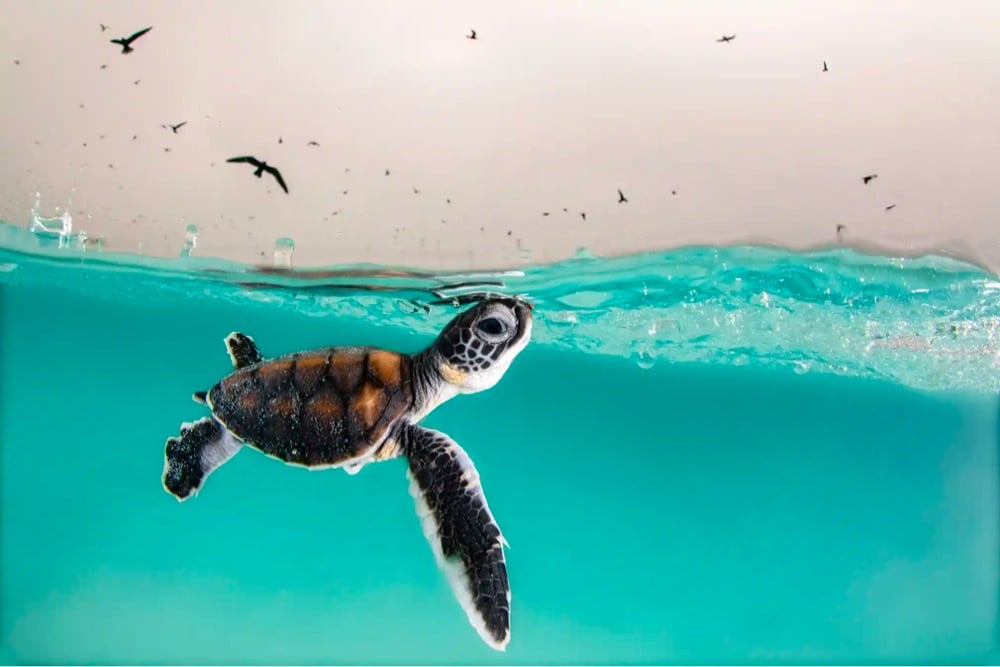
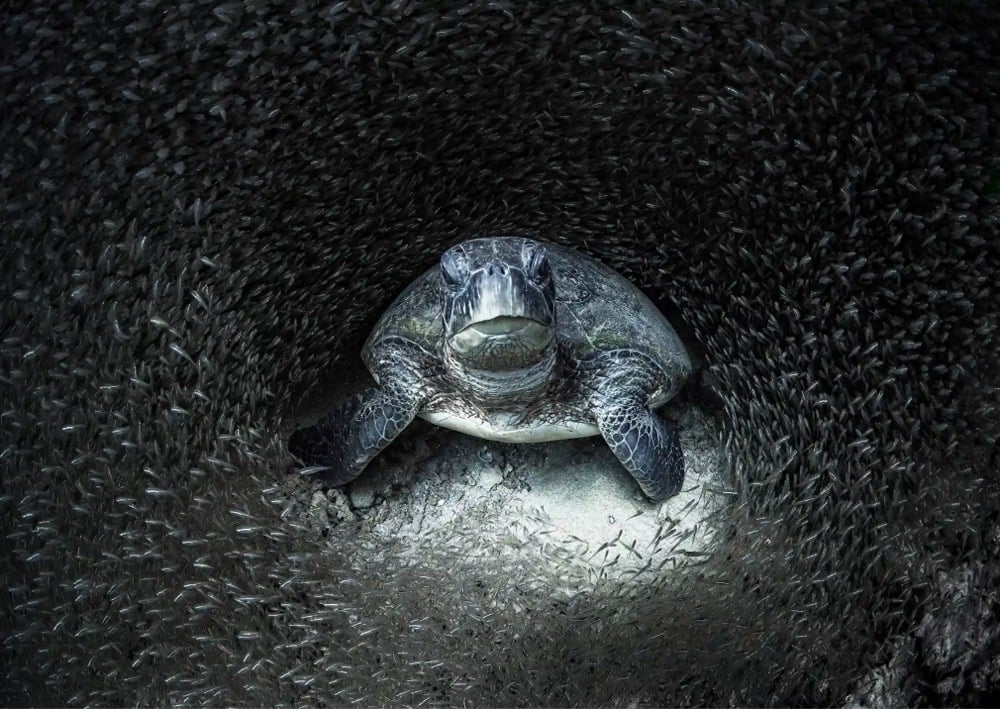
Oceanographic Magazine has announced the winners of their annual Ocean Photography Awards for 2021. The official site is reeeally slow so you can check out the winners at The Guardian, the BBC, or on Instagram. Photos above are by Hannah Le Leu (top) and Aimee Jan (bottom).
Netflix plans to combat Disney (Marvel, Star Wars, Pixar) with – *checks notes* – the Roald Dahl Cinematic Universe. “[Netflix] acquired the Roald Dahl Story Co., which manages the rights to the author’s characters and stories.”
How to Get Things Done When You Don’t Want to Do Anything. This is me today – I could barely even get through this article to figure out how to write this sentence.
This is a lovely, almost poetic piece by Daniel Riley about the sport of freediving and one of the best freedivers in the world, Alexey Molchanov.
Freediving is, after all, a lifelong opportunity to radically reshape one’s body and mind in the process. In pursuing depth, humans must train their lungs and brains to unlock secret sources of clarity and strength and oxygen and potential that are hidden within the body. They are secrets that, once revealed, make the divers not just more effective at their craft, they argue, but more effective, conscious, skillful, and thoughtful as human beings. There is a shift in perspective. A global realignment within one’s consciousness. The look in their eyes when they talk about this thing…every diver who’s gone truly deep sounds like those rarest of individuals who’ve seen the earth from the moon, or died and been resuscitated.
Alexey learned how to excel in the sport of freediving from his mother Natalia Molchanova:
When Alexey was younger, his mother, Natalia Molchanova, was the world’s best freediver, a distinction that she held for many years. She was a pioneer in the sport and the practitioner of a mind-and-body-control technique called “attention deconcentration.” She passed her secrets to her son, who perfected them and uses the regimen to reach a state of intense calm. By doing so, he can slow his heart rate, his metabolic rate, while simultaneously slowing the activity of his brain and his body. His focus deepens. He relaxes to the point of seeming asleep. He takes deep, drowsy breaths, like a summer breeze filling a sail.
I first learned about freediving from Alec Wilkinson’s 2009 piece in the New Yorker, where Natalia explained attention deconcentration:
To still the unbidden apprehensions that might interfere with her dive - what she describes as “the subjective feeling of empty lungs at the deep” — Molchanova uses a technique that she refers to as “attention deconcentration.” (“They get it from the military,” Ericson said.) Molchanova told me, “It means distribution of the whole field of attention — you try to feel everything simultaneously. This condition creates an empty consciousness, so the bad thoughts don’t exist.”
“Is it difficult to learn?”
“Yes, it’s difficult. I teach it in my university. It’s a technique from ancient warriors — it was used by samurai — but it was developed by a Russian scientist, Oleg Bakhtiyarov, as a psychological-state-management technique for people sho do very monotonous jobs.”
I asked if it was like meditation.
“To some degree, except meditation means you’re completely free, but if you’re in the sea at depth you will have to be focussed, or it will get bad. What you do to start learning is you focus on the edges, not the center of things, as if you were looking at a screen. Basically, all the time I am diving, I have an empty consciousness. I have a kind of melody going through my mind that keeps me going, but otherwise I am completely not in my mind.”
After reading both of these great pieces, you can check out one of Molchanov’s recent world record dives:
Every year for the past several years on September 21, Demi Adejuyigbe makes a video featuring the 1978 Earth, Wind & Fire song September (which begins “Do you remember, twenty-first night of September?”) This year, for what he says is his final effort, Adejuyigbe made a whole-ass movie, complete with special effects. Gonna watch this later with my daughter, who is 12 today (and owns the t-shirt).
In tandem with the video, Adejuyigbe is raising money to benefit The West Fund (a pro-choice Texas organization), Imagine Water Works (a New Orleans organization focused on Hurricane Ida relief efforts), and The Sunrise Movement (a climate emergency advocacy group) — you can donate here.
Update: Adejuyigbe shared some behind-the-scenes stuff from the video production, including how they did the rotating bathroom.
we spent 4 days in the heat up in Valenica constructing 5 walls for the set and fitted them into a giant 10x10 rotating wheel gimbal (one of only 3 in CA apparently! spent a long time just tracking one down!)
(via waxy)
I don’t know about you, but I will read any article titled “How Humans Lost Their Tails”, especially if it’s written by @carlzimmer. “A team of scientists in New York say they have pinpointed the genetic mutation that may have erased our tails.”
An appreciation of the college education by Agnes Callard. “Let me come out and tell you what a university is for: a university is a place where people help each other access the highest intellectual goods.”
Robert Durst, subject of HBO’s The Jinx, was convicted of first-degree murder in the killing of his friend Susan Berman. “What the hell did I do? Killed them all, of course.”


For the next two weeks, L’Arc de Triomphe in Paris will be wrapped, an installation that realizes a project begun by the late husband and wife team Christo and Jeanne-Claude in 1961.
L’Arc de Triomphe, Wrapped, a temporary artwork for Paris, is on view for 16 days from Saturday, September 18 to Sunday, October 3, 2021. The project has been realized in partnership with the Centre des Monuments Nationaux and in coordination with the City of Paris. It also receives the support of the Centre Pompidou. The Arc de Triomphe is wrapped in 25,000 square meters of recyclable polypropylene fabric in silvery blue, and with 3,000 meters of red rope.
In 1961, three years after they met in Paris, Christo and Jeanne-Claude began creating works of art in public spaces. One of their projects was to wrap a public building. When he arrived in Paris, Christo rented a small room near the Arc de Triomphe and had been attracted by the monument ever since. In 1962, he made a photomontage of the Arc de Triomphe wrapped, seen from the Avenue Foch and, in 1988, a collage. 60 years later, the project will finally be concretized.
Jeanne-Claude died in 2009 and Christo followed in 2020, so the project was completed by their team according to their wishes. I would have liked to have seen this in person…The Gates in NYC were wonderful.
Welp, from the small glimpses we get in this trailer, Joel Coen’s The Tragedy of Macbeth, starring Denzel Washington and Frances McDormand, looks pretty fantastic. Out in theaters on Dec 25, streaming on Apple+ Jan 14.
So many female body parts are named for men; here are their official medical names. Fallopian tube = uterine tube, G-spot = internal clitoris, Kegel muscles = pelvic floor muscles.
Is Jane Austen the Antidote to Social Media Overload? “Racking up likes and followers today resembles the nonstop friending of 19th-century England. But Austen’s characters figured out how to disengage.”
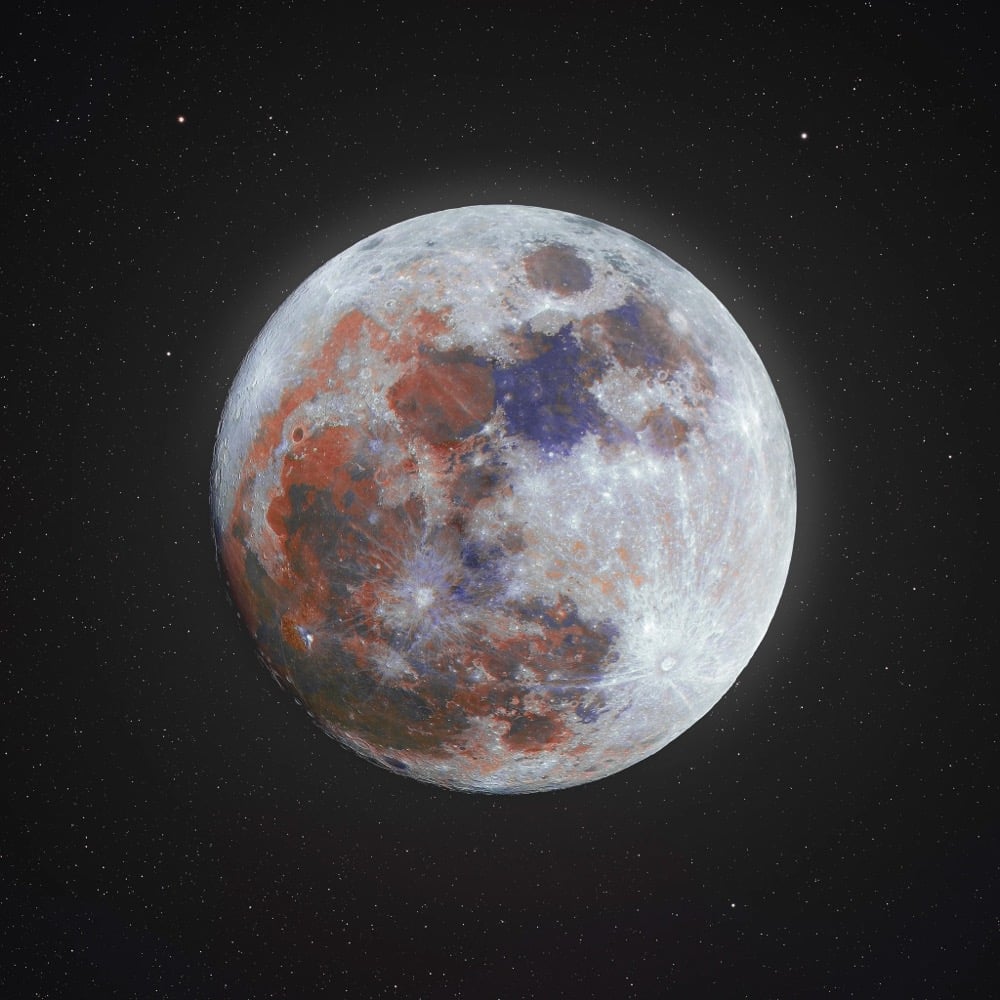
The full moon was wonderful last night and Andrew McCarthy captured this colorful image of our nearest celestial companion. McCarthy explained where all those colors come from:
Back to this image, this was captured through a telescope and involved capturing thousands of frames to reveal the details. But what about the colors? The moon is gray, of course, but not *perfectly* gray. Some areas have a subtle blue tint, and others have a more orange tint. By teasing out those subtle colors, I can reveal the mineral composition of the moon! Blues denote titanium presence, while orange shows iron and feldspar present in the regolith. You can also see how impacts paint the surface with fresh color in the ejecta as they churn up material.
A print is available, but only for a very limited time (~6 more hours as of pub time).
A podcast that features “long, uninterrupted soundscapes” of the Australian wilderness. Great for working or relaxing.
In Living While Black, in Japan, directed by Keith Bedford and Shiho Fukada, a group of African-Americans talk about what it’s like to live in Japan as Black people versus their experiences living in the United States.
“I didn’t leave because I was running away from anything. I left because I felt I could be more myself in Japan.”
“Living in Japan, as an African-American, I’ve honestly never felt more free.”
“You know, I can do things here in Japan that I can’t do back at home, in the U.S.”
“I can catch a cab when I’m not trying to catch a cab. People in stores that are supposed to serve you, serve you, like they serve everybody else.”
If you’re talking about the origins of rock & roll, Sister Rosetta Tharpe has to be included in those conversations. Her early fusion of gospel, the blues, and the electric guitar (as on 1944’s Strange Things Happening Every Day, a contender for the first rock & roll record) had a huge influence on men like Little Richard, Chuck Berry, and Elvis Presley, who ended up winning much of the credit for this innovation. This 60-minute BBC documentary from 2011 is a good place to start learning about Tharpe — part 1 is embedded above and here are parts two, three, and four.
I found this via Ted Mills at Open Culture, who writes:
As the doc makes clear, Tharpe had a rebellious streak, didn’t do what she was told, and pushed boundaries in a very segregated America. She invited the all-white Jordanaires to tour with her, surprising house managers and booking agents alike. And she carried on a love affair and creative partnership with fellow gospel singer Marie Knight for decades, very much on the down low.
So perhaps this is the reason Tharpe has not been on our collective radar — we’ve been slow to admit that rock guitar was created by a queer black woman devoted to the Lord.
And if you want to see the whole clip of Tharpe performing Didn’t It Rain from the opening scene of the documentary, there’s really not a better way to spend eight minutes (bc you’ll probably want to watch it twice):
Damn.
Ambient Chaos, a fun soundboard from @nealagarwal. Church bells + bees + casino + waves is my jam right now.
I don’t know if this is comforting or what, but psychologist Steven Taylor published a book two months before the start of the Covid-19 pandemic called The Psychology of Pandemics that predicted many of the behaviors we’ve been seeing over the past 18+ months, including masking backlash, the acceptance of conspiracy theories, vaccine resistance, and wholesale denial that the pandemic is even happening.
Taylor would know because he predicted it. He wrote a remarkable little book back in 2019 called “The Psychology of Pandemics.” Its premise is that pandemics are “not simply events in which some harmful microbe ‘goes viral,’” but rather are mass psychological phenomena about the behaviors, attitudes and emotions of people.
The book came out pre-COVID and yet predicts every trend and trope we’ve been living for 19 months now: the hoarding of supplies like toilet paper at the start; the rapid spread of “unfounded rumors and fake news”; the backlash against masks and vaccines; the rise and acceptance of conspiracy theories; and the division of society into people who “dutifully conform to the advice of health authorities” — sometimes compulsively so — and those who “engage in seemingly self-defeating behaviors such as refusing to get vaccinated.”
He has no crystal ball, he says, it’s just that all of this has happened before. A lot of people believed the Spanish flu pandemic of 1918 was spread by the Germans through Bayer aspirin. It’s all based on basic psychology as to how people react to health emergencies.
The denialists and refuseniks today are engaging in what the psychology field calls “psychological reactance.” It’s “a motivational response to rules, regulations, or attempts at persuasion that are perceived as threatening one’s autonomy and freedom of choice,” the book describes. Think what happens when someone says “Eat your broccoli.”
Following onto that is what psychologists term “motivated reasoning.” That’s when people stick with their story even if the facts obviously are contrary to it, as a form of “comforting delusion,” Taylor says. The book covers “unrealistic optimism bias,” in which people in pandemics are prone to convincing themselves that it can’t or won’t happen to them.
The book almost wasn’t even released at all — Taylor’s publisher told him the book was “interesting, but no one’s going to want to read it”.
You’re Still Exhausted. “Life is still exhausting because the pandemic was and remains exhausting in so many invisible ways – and we still haven’t given ourselves space to even begin to recover.”
Lara Hogan’s book Demystifying Public Speaking is now available online for free. I’ve pretty much retired from speaking in public, but I have heard many great things about this book.
Parents feeling the immense strain of guiding their can’t-be-vaxxed under-12s through the American Delta variant hellscape. “I feel like we’re constantly reacting. There’s not enough time to be proactive. It’s like a fire alarm every day.”
Dr. Alan Braid, a practicing OB/GYN in the state of Texas for 45 years, explains why he provided medical care in the form of an abortion to a woman in violation of the state’s absurd and dangerous new law.
A new Texas law, known as S.B. 8, virtually banned any abortion beyond about the sixth week of pregnancy. It shut down about 80 percent of the abortion services we provide. Anyone who suspects I have violated the new law can sue me for at least $10,000. They could also sue anybody who helps a person obtain an abortion past the new limit, including, apparently, the driver who brings a patient to my clinic.
For me, it is 1972 all over again.
And that is why, on the morning of Sept. 6, I provided an abortion to a woman who, though still in her first trimester, was beyond the state’s new limit. I acted because I had a duty of care to this patient, as I do for all patients, and because she has a fundamental right to receive this care.
I fully understood that there could be legal consequences — but I wanted to make sure that Texas didn’t get away with its bid to prevent this blatantly unconstitutional law from being tested.
Braid concluded his piece: “I believe abortion is an essential part of health care.” Absolutely.
The winners of the 2021 Ig Nobel Prize. “Each winner has done something that makes people LAUGH, then THINK.” The peace prize winner studied whether beard growing evolved to protect from face punching.
In a statement, Pfizer-BioNTech says that their Covid vaccine “has been shown to be safe and highly effective in young children aged 5 to 11 years”. They plan to file for emergency authorization by the end of the month.
In this engaging video we meet Aaron Fletcher, a traveling shepherd who has been “guerrilla grazing” and living off the land for 12 years.
He lets his sheep graze — with permission — public parks and side lots. Homeless by choice, he offers his services to small farms in exchange for food or a place to stay (though half his calories come from his sheeps’ milk).
With a tiny metal cart home pulled by his sheep, he has a bed, a refrigerator/evaporative cooler, a shower (he uses a pesticide sprayer to pump up the water pressure), power (solar panel), sun oven, a mailbox stove for heat, bicycle tire wheels and a corrugated plastic roof.
Fletcher makes cheese and butter from his sheep milk and forages for seeds, fruits, vegetables and herbs.
I heard about this from @hova414, who teases it better than I can:
An “anti-consumer” gives one of the most impressive product demos I’ve ever seen; a nonstop highlights reel of ingenious off-grid inventions. Come for the wearable teepee, stay for the solar banana bread.
My jaw legit dropped open at the solar bread part — that solar oven! It’s absolutely fascinating to listen to him explain how he efficiently uses space, public resources, and a limited amount of tightly curated technology products to live a happy and healthy life, an outcome many of us have been told by capitalism is impossible. I also enjoyed his distinction between being a selfish prepper and a community prepper:
By the way I’m a prepper, but I’m not like a normal prepper as in… I call it selfish prepping. I’m a community prepper. I’m not so interested in trying to survive in a post-apocalyptic situation if everyone around me is suffering. So I’m trying to figure out how to bring up the community so that they can all thrive.
You can learn more about Fletcher’s life and how he lives it on his website and check out his YouTube videos for more clever DIY tips.
Update: Milkshake duck alert — Fletcher’s brand of off-the-grid anti-authoritarianism apparently includes being an anti-vaxxer, as evidenced by some of the videos in his feed. “I’m not so interested in trying to survive in a post-apocalyptic situation if everyone around me is suffering” indeed… :(
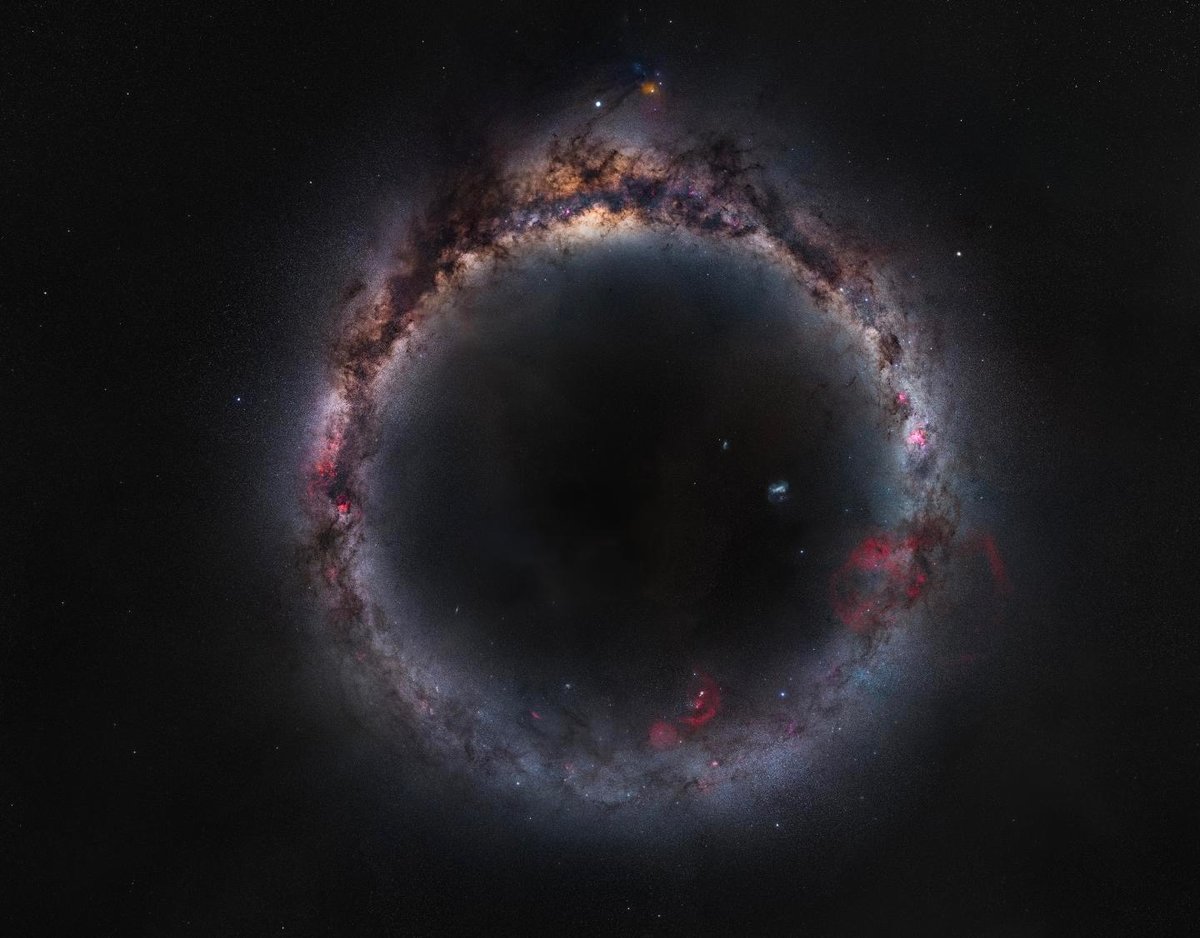
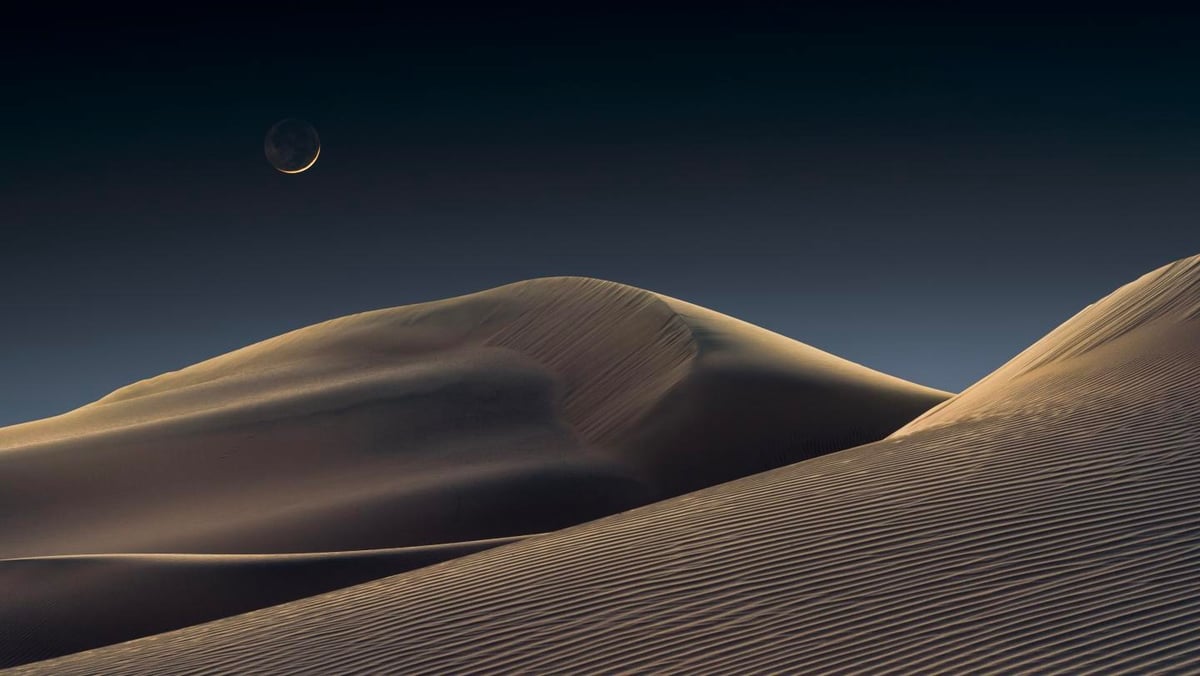
The Royal Museum Greenwich has announced the winners of the Astronomy Photographer of the Year for 2021. Zhong Wu won the galaxies category with a 360-degree view of the Milky Way (above, top), a mosaic which took two years to create — the northern hemisphere portion of the galaxy was photographed in China and the southern part in New Zealand. Jeffrey Lovelace’s photo of the crescent moon over Death Valley sand dunes (above, bottom) took the prize in the skyscapes category.

That’s Meredith Southard’s cartoon for the New Yorker, a play on the marshmallow test. It’s funny because it’s true. I have an avocado in the fridge that I’m planning on using for lunch — but maybe it’s all brown inside?! So excited to find out if I’m actually eating lunch or not in a few minutes.
This piece by @tressiemcphd (feat. @shrinkthinks) about Covid denial, empathy, and grief is really interesting. “I am afraid that the onslaught of Covid denial stories is robbing me of [my humility] by undermining my empathy for others.”
As we learned from reading about the pink salt ponds of Camargue, France, flamingos get their distinctive pink coloring from the food that they eat — halophile algae and tiny animals like shrimp that feed on the algae. In this video from the San Diego Zoo, we get to see an underwater view of a flock of flamingos, at once graceful and gawky, feasting on the tiny critters. What a neat view! (via colossal)
Before Food Trucks, Americans Ate ‘Night Lunch’ From Beautiful Wagons. (Working on my night lunch!)
Mirroring most of Europe (where recycling rates are high), Maine has passed a law that makes manufacturers (and not consumers) cover the costs of recycling. Fantastic…companies should be responsible for this.

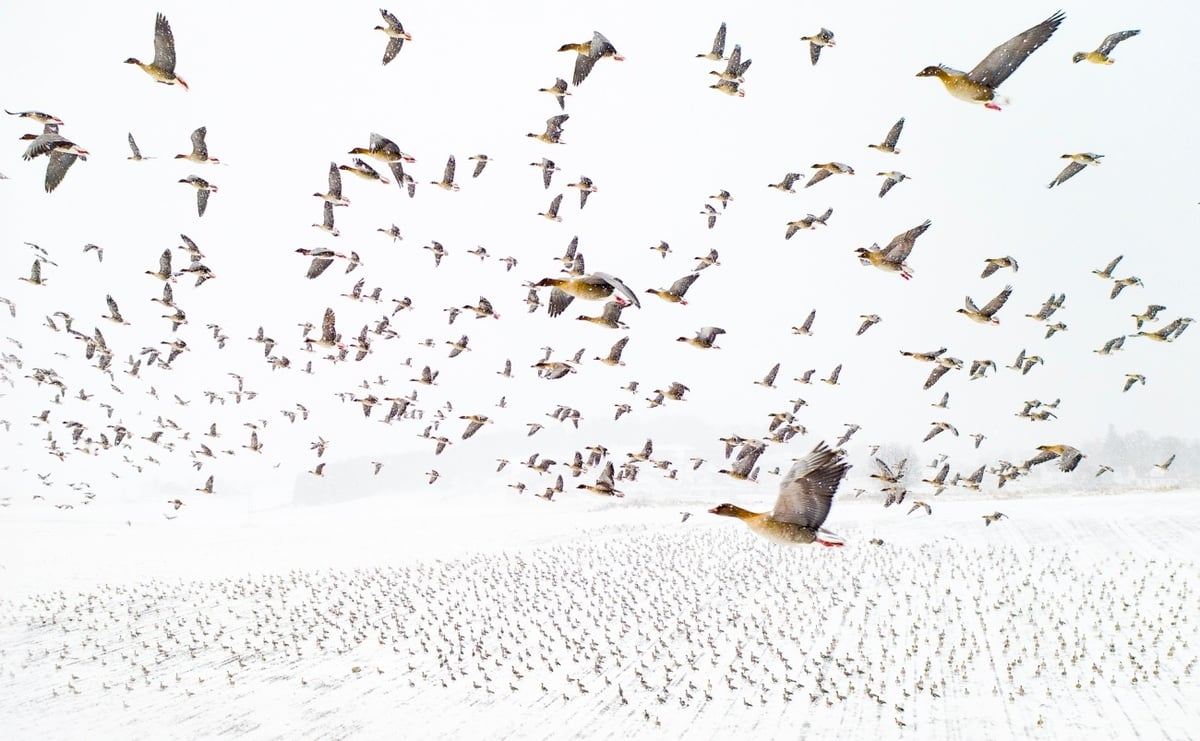
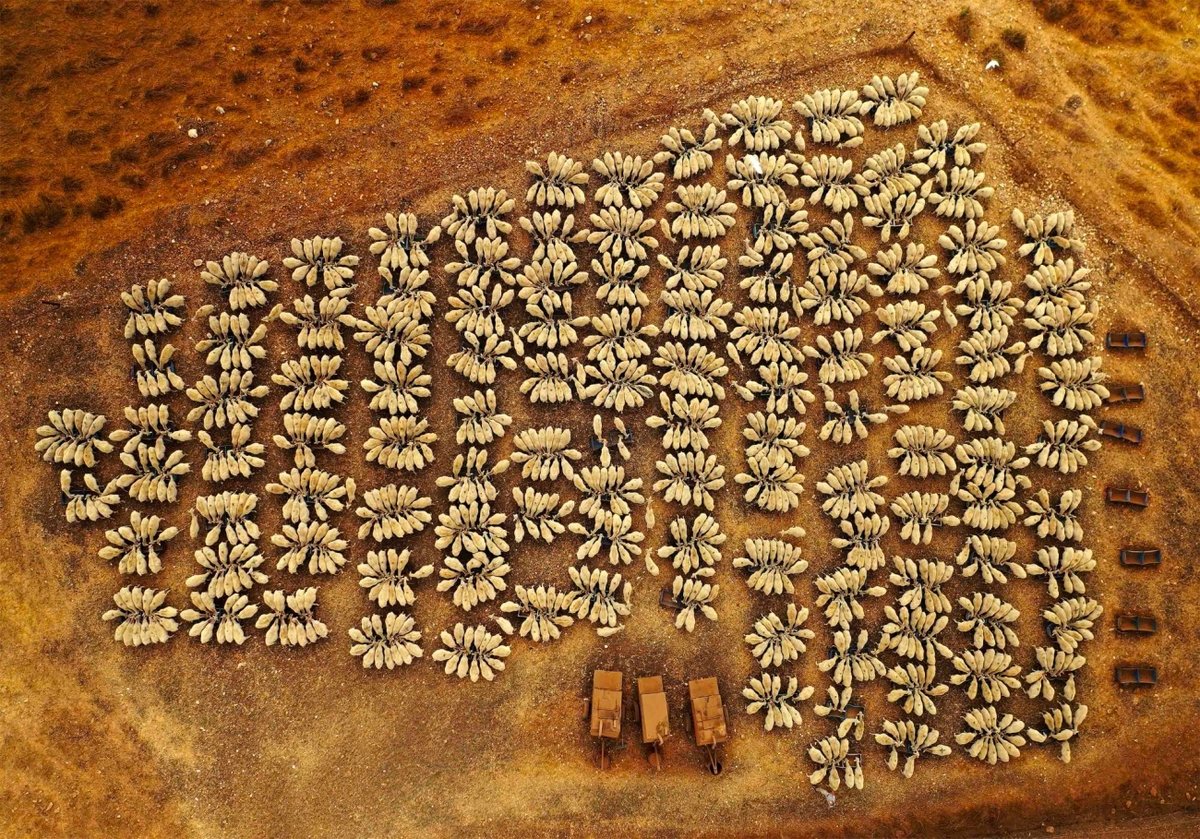
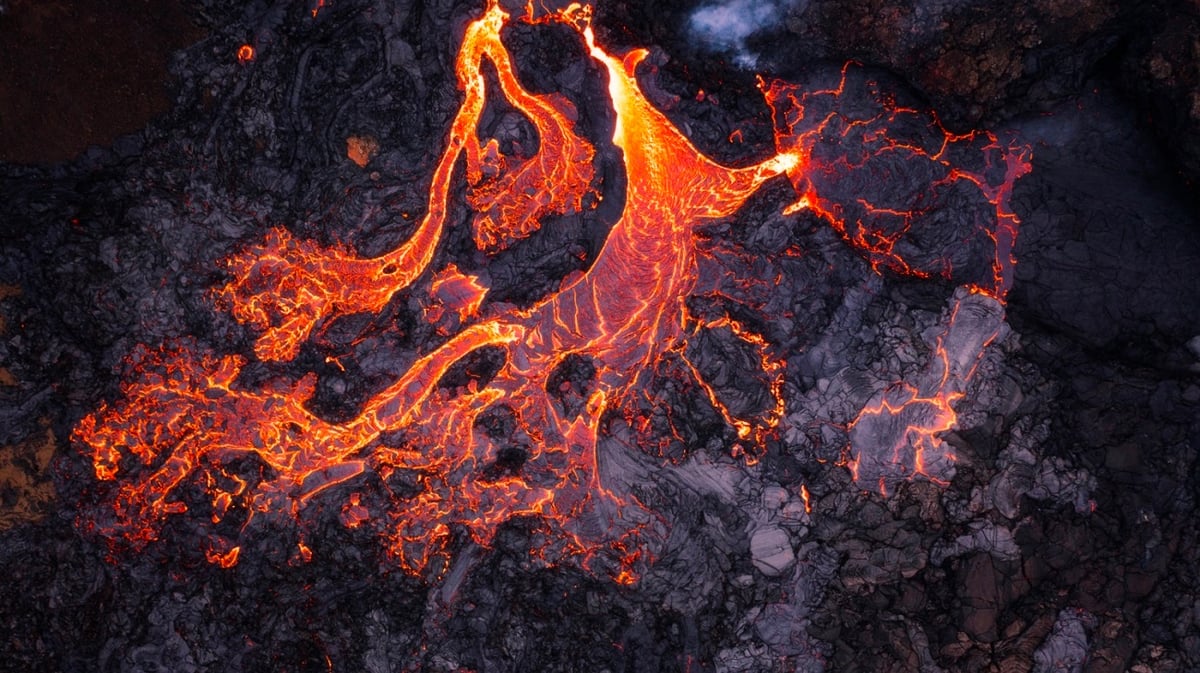
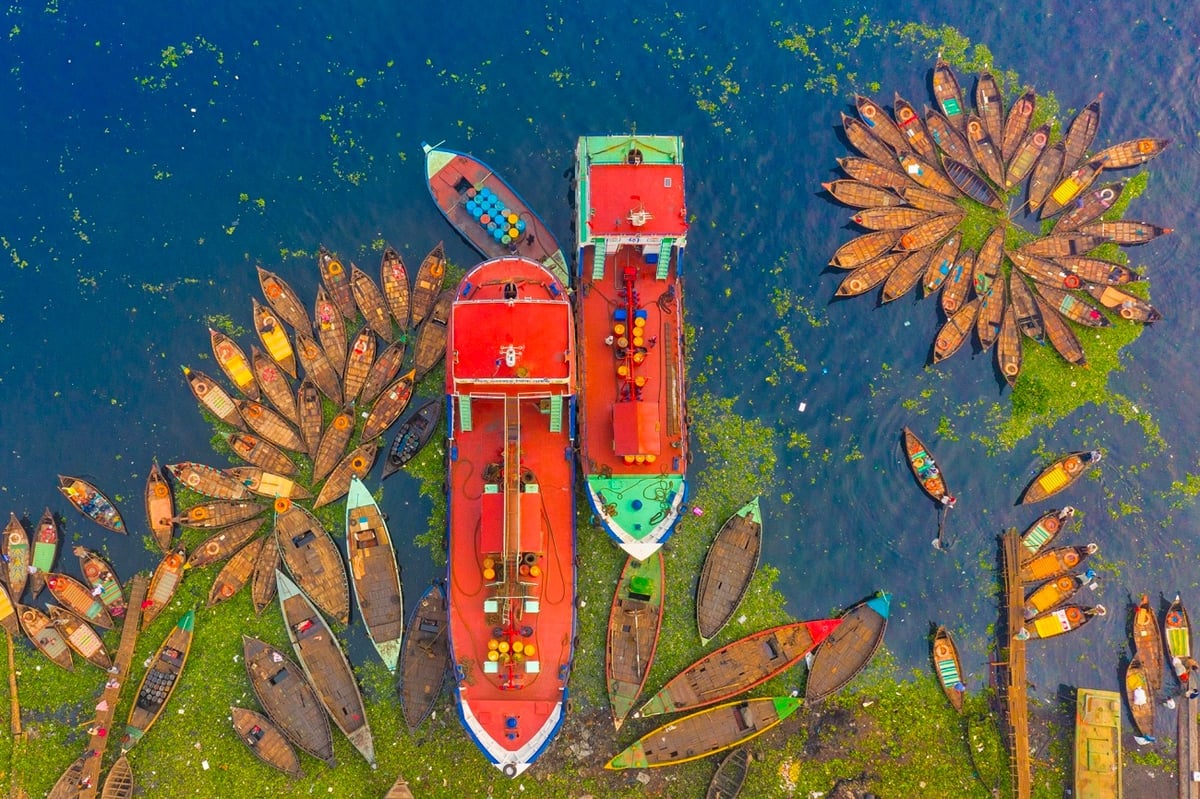
Drones have been around for awhile now, but I have yet to tire of the bird’s-eye images captured from above this remarkable planet of ours. The gallery of the winning images in the 2021 Drone Photo Awards is full of tiny doses of the overview effect. I’ve chosen a few of my favorites above. Photo credits, from top to bottom: Ran Tian, Terje Kolaas, Yoel Robert Assiag, Oleg Rest, and Md Tanveer Hassan Rohan.
See also this drone photo of Cao Bang, Vietnam that I shared recently. (thx, caroline)
1 out of every 500 Americans has died from Covid-19. Greatest country in the world, etc.
Colson Whitehead’s latest book is Harlem Shuffle, a crime novel. Love authors who range widely over format and genre.
Join cheesemonger Anne Saxelby as she shows us how to cut, serve, store, and accompany more than two dozen cheeses that cover the entire spectrum of cheese-dom, from Parmigiano-Reggiano to Cheddar to Roquefort to Burrata. This video is like a private cooking class with a very thoughtful & knowledgable host — and it made me incredibly hungry. A good pairing might be Saxelby’s recent book, The New Rules of Cheese.
But….. at the first mention of the word “fridge”, I could not help but think of this classic interview with French marketing consultant Clotaire Rapaille: In America, the Cheese Is Dead.
For example, if I know that in America the cheese is dead, which means is pasteurized, which means legally dead and scientifically dead, and we don’t want any cheese that is alive, then I have to put that up front. I have to say this cheese is safe, is pasteurized, is wrapped up in plastic. I know that plastic is a body bag. You can put it in the fridge. I know the fridge is the morgue; that’s where you put the dead bodies. And so once you know that, this is the way you market cheese in America.
Rolling Stone’s list of the best 500 songs of all time, updated for the first time since 2004. Lots to argue about here but also lots to enjoy. #1 is Aretha Franklin’s Respect.
After Anthony Bourdain died in 2018, I listened to the audiobook version of his fantastic Kitchen Confidential (read by Bourdain himself) and in retrospect, the trip he took to Tokyo documented in one of the final chapters was a clear indication that his career was headed away from the kitchen and out into the world. His long-time producer Lydia Tenaglia saw this too…she cold-called him after reading the book and pitched him on doing a TV show called A Cook’s Tour, where the intrepid Bourdain would travel to different locations around the world to experience the food culture there.
I met him at a point in his life where he had never really traveled before. He had written a book, Kitchen Confidential, and I had read somewhere that he was going to try to write a follow-up book called A Cook’s Tour. I approached him — I kind of cold-called him — and I said, “Listen, I work in television.” And at that point I was freelancing for other companies as a producer and a shooter and an editor. I called Tony, and he was still working in a kitchen at the time, and I said, “Would you mind if me and my husband, Chris, came and shot a short demo and we try to sort of pitch the idea of A Cook’s Tour — meaning you traveling the world, kind of exploring the way other people eat — as a television series?” And he was like, “Yeah, sure. Whatever.” I don’t think he had any expectations at that point. Again, he hadn’t really traveled.
A Cook’s Tour intrigued the folks at the Food Network and the show ended up running for 35 episodes over two seasons. And they are now all available to watch for free on YouTube. I’ve embedded the first episode above, where he goes (back) to Tokyo, but he also visits Vietnam, San Sebastian, Oaxaca, Scotland, Singapore, and Brazil during the show’s run. More from Tenaglia on how the show came about:
So that was the start of our relationship and our time together. We, fortunately, were able to pitch and sell that idea, A Cook’s Tour, to the Food Network. Me and Chris, my husband, and Tony, just the three of us, all went out on the road together for that first year, and we shot 23 episodes of A Cook’s Tour, and we kind of figured out the format of the show on the road. It was really Tony tapping into the references he did have — you know, films and books and things he had seen and knew about only through film and reading.
So he was able to bring all of those cultural references to the table, and the three of us together were able to kind of play with the format of what those visuals would look like, so that it wasn’t just about him eating food at a restaurant. It was really about everything that was happening around him — or the thoughts he was having internally as he had these experiences or the references that he had seen through film that he loved and books that he had read, like The Quiet American, and how those things related to what he was experiencing.
So it became this kind of sort of moving, evolving format that was very much based on, predicated on the location that we were in and those references that he could call up. The show just kind of began to take shape. I mean, really there was no format of the show going into it. We just said, “Hey, we’re going to travel around the world, and this guy … he’s a chef, and he’s written this great book, and he’s going to try food in other countries.” And that’s what sold the project to the Food Network at the time. Then, as we went and actually made the show, we really started to play with the format and turned it into something else.
I would say that 17 years later the show has gone through various iterations. We did the two seasons of A Cook’s Tour on the Food Network, and then we did eight seasons of No Reservations on the Travel Channel, and now we’re on Parts Unknown. And the show has evolved as Tony has evolved, as the crew has evolved, as the technology has evolved. The show has sort of turned into this kind of, you know, one man’s initial foray into the world, and I think today, 17 years later, he’s really kind of evolved into more of a cultural anthropologist.
The show’s very sociopolitical — it’s about people and characters. The food and the people are just the entry point. It’s really about all the context around it. The more you can bring story to that and the more you can bring references to that — film references … character references — the more you can introduce interesting, unique characters into the equation, I think that’s what keeps the show very fresh and why it’s continuing to evolve all these years later. Each show is very different from the one before it.
It’s fun to watch the prototype of what eventually became a very beloved and different show. (via open culture)

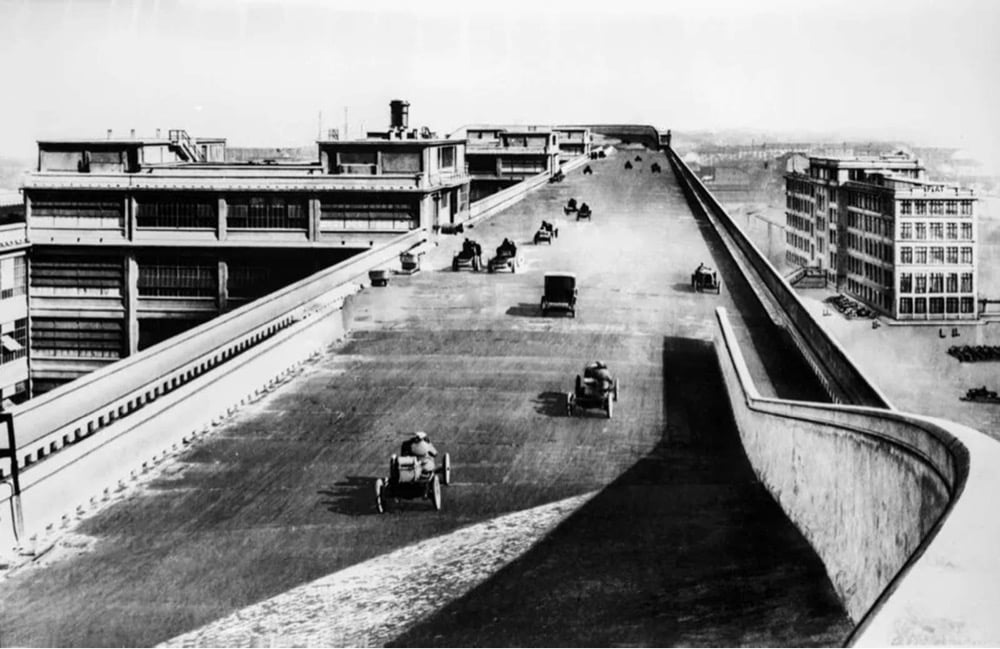
When it was built in the 1920s in Turin, Italy, the Fiat factory was designed with a racetrack on the top of the building, both for car testing purposes and for racing.
The factory’s best-known symbol is the test track, which is a superb piece of design modeling, and construction that occupies the whole roof surface of the workshops. Two 443 meters straights, joined by parabolic bends, form a continuous track for testing the cars.
Originally, as soon as the cars left the assembly lines they could flow directly upward to the test track through the snail-shaped ramps completing the whole processing cycle inside the factory. Moreover, these spiraling ramps inside the building allowed the cars to be driven back down and into showrooms.
The track was a little over 1/2 mile long. Many more views at Rare Historical Photos. (via @laxgani)
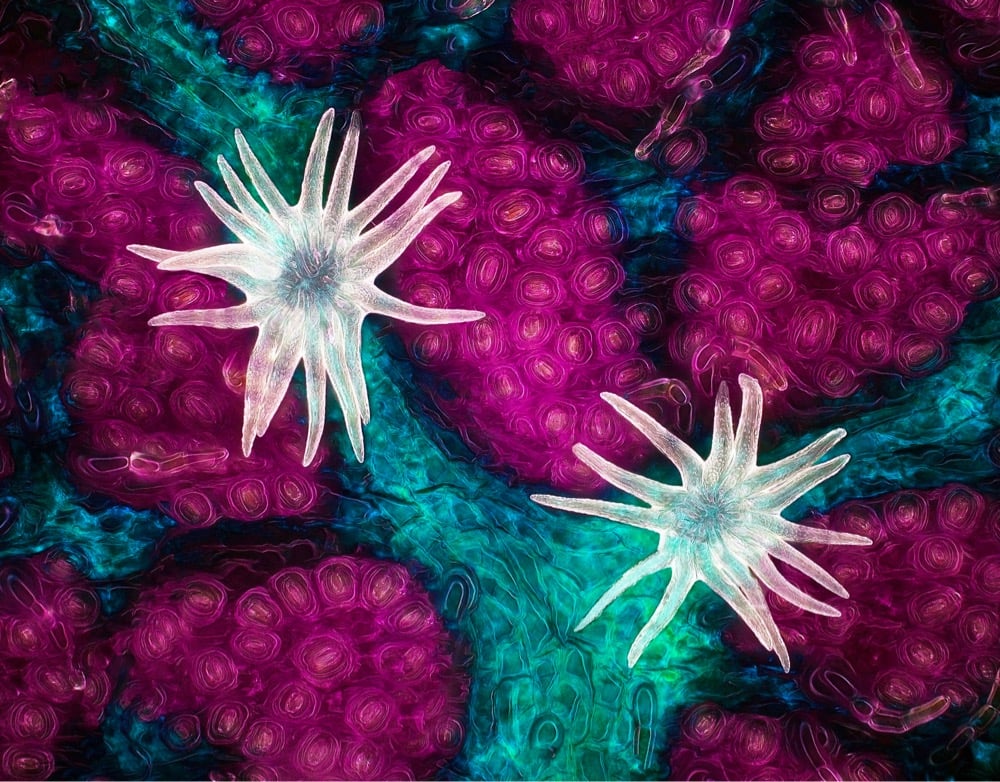
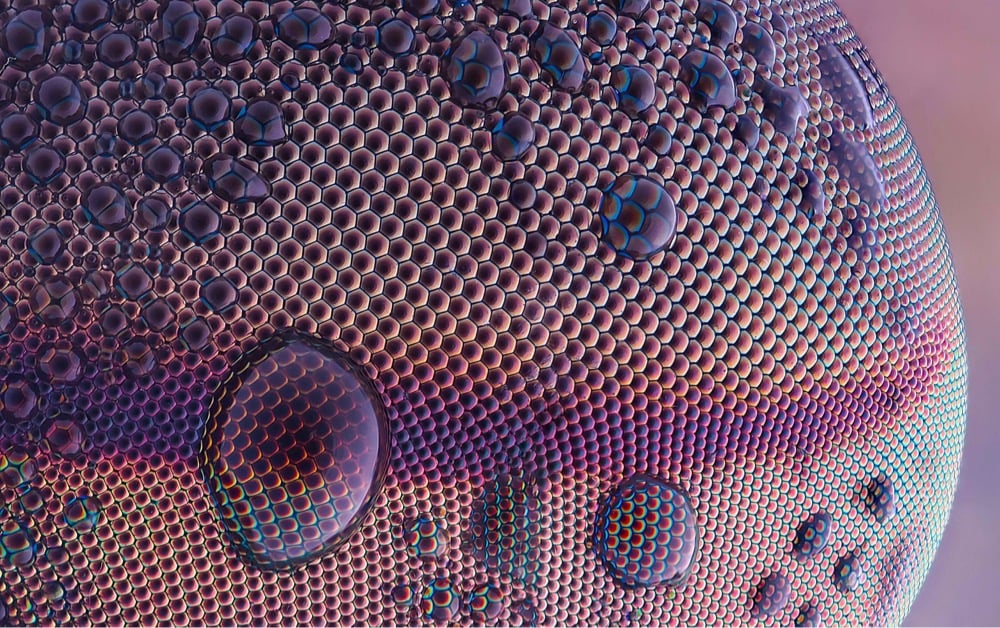

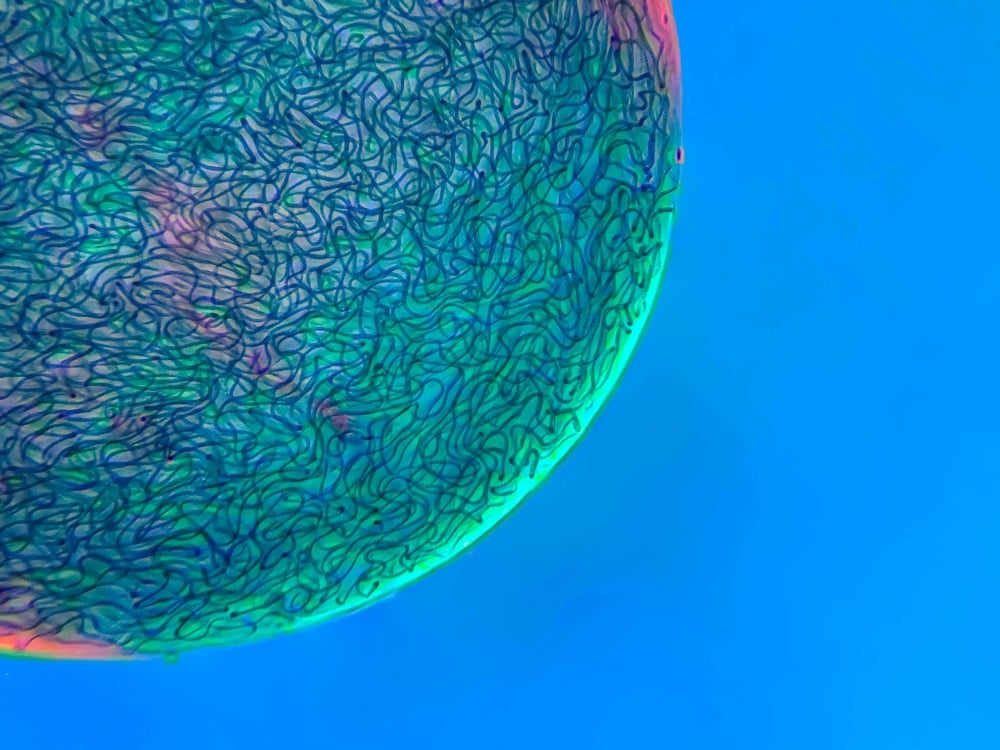


This is always a favorite of mine… Nikon has announced the winners of the Small World Photomicrography Competition for 2021. As always, I’ve shared a few of my favorites above. Photo credits from top to bottom: Jason Kirk, Oliver Dum, Saulius Gugis, Martin Kaae Kristiansen, Paula Diaz, and Caleb Dawson.
Fossil Fuel Capitalism Is Cutting Our Lives Short. “A new study shows that 17 billion life years could be saved if air pollution was reduced to WHO standards.”
What if you substituted a bowling ball for the ball in sports like ping pong, golf, cricket, tennis, and soccer — but also in darts and skeet shooting? This very funny video imagines just that.
Season 5 of the excellent Scene on Radio podcast is about the climate crisis. “We’ll trace the evolution of the colonizing, extractive Western culture that has driven us into the ecological ditch, and we’ll look at potential solutions – the repair.”
Ah man, Norm MacDonald is dead at the age of 61. I loved him on SNL’s Weekend Update.

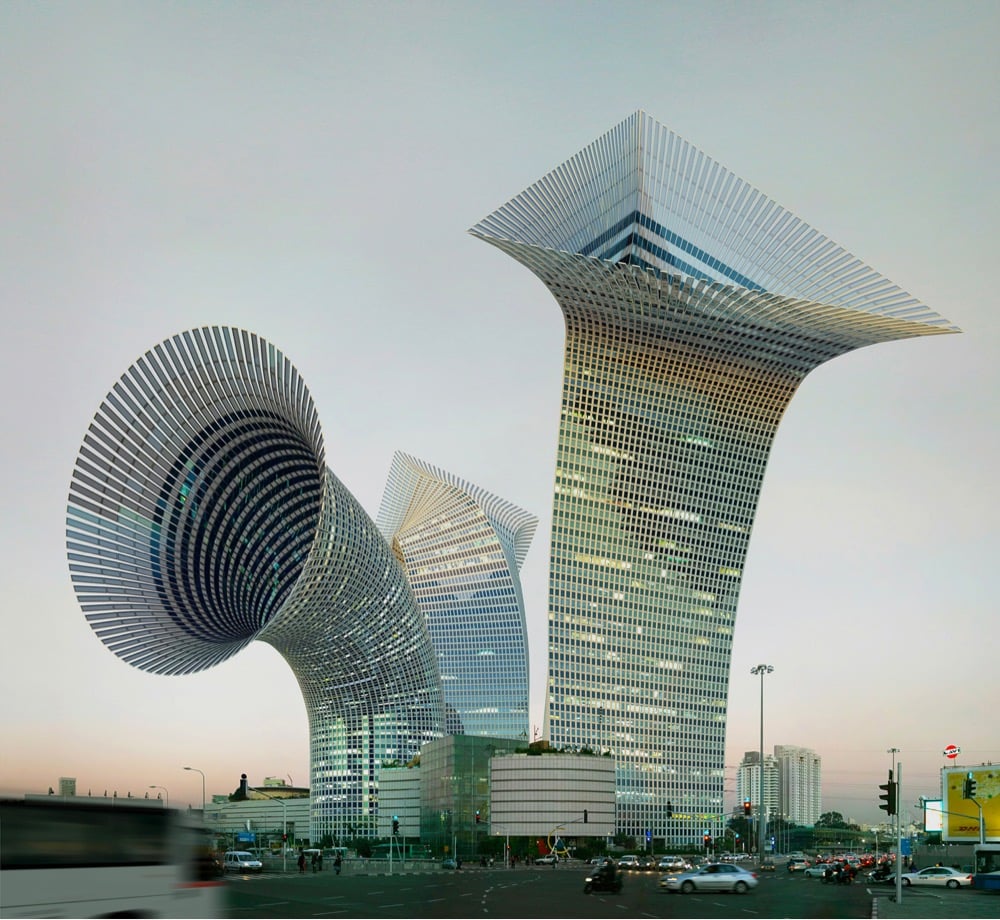
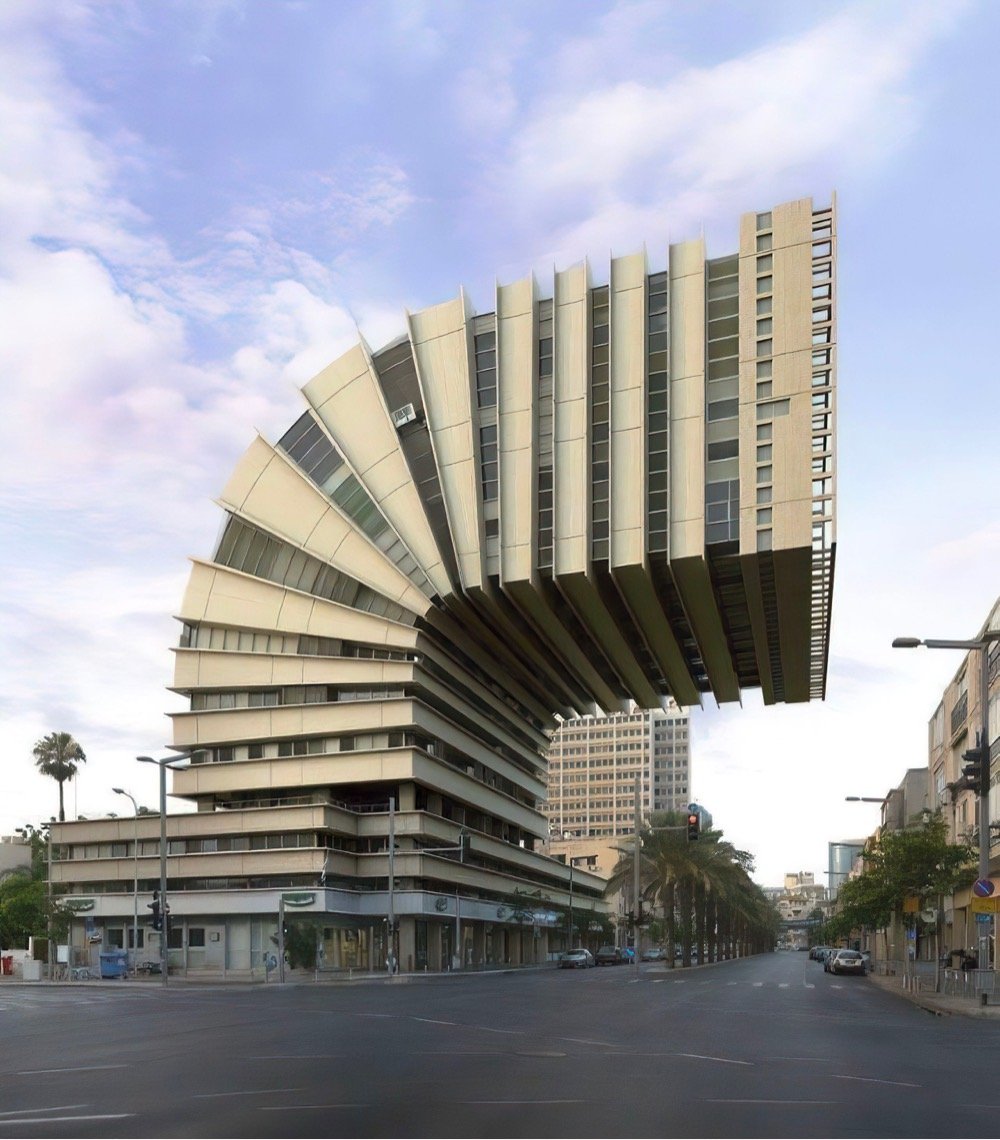
For his City Portraits series, Victor Enrich digitally modified photos to create absurdist and surrealist buildings that look like a lot of fun to live in.
See also 13 Jaw-Dropping Examples of Photoshopped Architecture.



For her project Topography of Tears, Rose-Lynn Fisher used a microscope to photograph the crystalized patterns of dried human tears. Part of why the images all look different is because tears are made up of varying chemicals depending on why they’re made.
Scientifically, tears are divided into three different types, based on their origin. Both tears of grief and joy are psychic tears, triggered by extreme emotions, whether positive or negative. Basal tears are released continuously in tiny quantities (on average, 0.75 to 1.1 grams over a 24-hour period) to keep the cornea lubricated. Reflex tears are secreted in response to an irritant, like dust, onion vapors or tear gas.
All tears contain a variety of biological substances (including oils, antibodies and enzymes) suspended in salt water, but as Fisher saw, tears from each of the different categories include distinct molecules as well. Emotional tears, for instance, have been found to contain protein-based hormones including the neurotransmitter leucine enkephalin, a natural painkiller that is released when the body is under stress.
This project is also available in book form. (via austin kleon)
Update: Per an email from the photographer, I’ve corrected the post above to note that these images were taken with a normal optical microscope, not a scanning electron microscope. Thx, Rose-Lynn!
My friend Joanna Goddard runs a website called Cup of Jo. She started it as a personal blog and has turned it into a site for women with a diverse and interesting group of contributors. However, the truly marvelous thing about Cup of Jo is the comments. That’s right, the comments. They are always good, often great, and occasionally sublime. Years and even decades after most websites have removed their comment sections for being toxic and unwieldy, Cup of Jo readers are in there delivering on the original promise of the web as a way to connect humans with one another by providing advice, reflections, stories, and support to each other.
One of the site’s best uses of the comments section are on posts that ask a simple question, like Where Did You Grow Up? (See also What Unexpected Relationships Have You Formed During the Pandemic?) I pulled out a few of my favorite comments from this post and shared them below.
My dad is a physicist and biomedical researcher, so we made a few big moves when I was growing up. From Long Island, to Chicago, and then to Saskatoon, Saskatchewan (central Canada). I went to tiny town Oklahoma for college before coming back to Sask. It is wild up here, where winter days are often -40 degrees Fahrenheit. In my youth I was torn in half between my longing for city excitement and the call of the wild. These days, I am proud to be raising a 4 year old that knows the rules of camping, and how to act around critters like bears and moose. His first concert was an Inuit band who throat sang in Inuk. We danced as a storm opened up and poured rain on us, the natural light show illuminating the fractal jack pine tree tops. All three of us slept like babies that night in our tent with the storm pounding the forest in the background. The city was fun, but I wouldn’t trade my quality of life for anything. I know how to thank the Great Spirit for the grandfather trees of the forest, and how to step lightly where wood frogs lie. I know the feeling of the air changing to autumn or spring on my cheeks, before a single leaf falls or prairie crocus blooms. The knowledge of this place is etched into the fabric of my body, as it will be for my stepson.
…
I grew up in a North Dallas trailer park backed up to a state highway and a freeway with my older brother and young widowed mom. We lived off social security and hotdogs. I thought anyone whose mobile home vinyl siding wasn’t peppered with holes from a weed whacker was fancy.
After hours, I played in the construction materials depot next door with my brother and our little band of trailer park buddies. We got a lot of shit for being “trailer trash kids” but we all grew up to become hella cool and kindhearted: amazing parents, teachers, nurses, artists, writers, musicians, therapists, political shit-stirrers, philosophers, world travelers.
We used to catch opossums with rusty cat traps and sneak them into our bathtubs where we would feed them scraps and get hissed at. I recall chasing an armadillo down a hill with a BB gun in the blazing Texas sunshine and thinking no funner game had ever been invented.
We would dismantle the breaks from our second-hand banana-seat bikes and then race each other down the “big hill” and jump into the grass kamikaze-style at the screaming last minute where we would lay in a banged-up heap laughing hysterically in the face of death.
My brother once shot a dove off a telephone wire from our front porch and proceeded to cook it for my first-day-of-high-school breakfast, ironically, because he wanted me to be able to tell that trailer-trash story to my kids someday. I do, and they don’t believe me. I’ve raised my two kiddos in Toronto, The Netherlands, and now Colorado. They think trailers are something you take into the mountains for a glamping vacation. They are also hella cool and kindhearted. I marvel at them.
…
I grew up in a small town in South Alabama. I am from the land of yes ma’ams, covered dish suppers at church, and pulling over for funeral processions. I was raised on a steady diet of collard greens, pimento cheese, grits, pear salad (google it), boiled peanuts, and fried hand pies. To this day there is nothing more delicious - figuratively and literally - than the memory of homemade vanilla ice cream in an old ice cream maker with my dad cutting and dropping slices of peaches picked from our tree. I didn’t know enough to be concerned that he was cutting them with his pocket knife. I miss living somewhere that included mac n cheese on a salad bar. I have vivid memories of hearing my grandmother tell stories involving her childhood friend, Nell Lee (known to most of us as Harper Lee). One summer, I rode my horse into town almost every day and got an ice cream cone at the shop owned by my friend’s family. My dad was the high school principal and my mother was the deputy sheriff. I was the high school mascot and to this day, I highly recommend any job where the dumber you act, the more successful you are. High school adventures included bonfires in someone’s field, hot days at the creek, and constantly driving around the town square. There was one restaurant in town and it opened up late each Friday night to serve a full fried chicken meal to the returning high school football team, band, and cheerleaders after every away game. There was a wrong and a right side of the tracks. It was simultaneously both the most loving community I have known and the most discriminatory.
…
I grew up in Houston on a street full of kids. Houston was playing kickball on a dead-end street and “hide from cars” on summer nights when we were allowed to stay out after dark. Everyone lived in their front yards and garages. A dad only had to prop up the hood of his car, and every man on the block came over and started consulting. This led to impromptu pizza or burger parties. Every Halloween, my dad and our preacher staged a spookhouse in our garage that ALL the kids visited. Our neighborhood was swarmed with kids trick or treating and our group, ranging from 3 years old to 10, roamed for blocks, completely safe, until the year The Candyman ruined trick or treating forever. Every Christmas Eve, we girlfriends swam in Sam’s pool, then went caroling on our street with bare feet and wet hair. We thought that was very funny. We rode our banana-seat bikes to stores near us until we graduated to 10-speeds. We went to glossy, over-air-conditioned shopping malls. We had a lot of freedom because things were so accessible.
…
I grew up in Encinitas, CA (north of San Diego) when it was a sleepy, little beach town. I miss all “my” beach spots, friends, and that coastal air. It was one of those places where even if we didn’t know everyone, everyone was treated with consideration. It wasn’t always idyllic but it was a pretty lucky place to be raised. You could count on anyone being willing to help you. One time my dad’s Oldsmobile broke down on a random street. He had no problem walking up to a door, knocking on it and asking to use the phone (hello 1989!). The surfers were still zonked on the couches, but one let my dad in and let him call a friend. He told my dad to leave the car and come back for it whenever he could get a tow truck for the car. No one was mad at being woken up at 7am, they just rolled with it.
You can read the post and the rest of the comments here. I grew up in northern Wisconsin on a farm and then in a small nearby town. We rode our bikes everywhere as kids and our parents had no idea where we were most of the time. The music options were country or heavy metal — I didn’t care for either. The nearest movie theater was in a town 10 miles away and I still remember the excitement of standing in line for Ghostbusters on a sweltering June evening. As a teen, I would go around to all of the vending machines in town (there were only three or four of them) and check the coin returns for money — any quarters I found would go right into the Ms. Pac-Man machine at Erickson’s grocery store. A few people I knew had a vacation house on the lake but we couldn’t afford one. School was terrible and cliquey and I never felt like I belonged. I left after high school and aside from summers and a short stint after dropping out of grad school, I never went back. I haven’t been for a visit in nearly 20 years and only recently have I been curious about seeing it through adult eyes and revisiting old haunts.
See also this classic NY Times dialect quiz (which I took the other day and it nailed my childhood location within 90 miles) and using only food, where did you grow up? (my answer: hotdish, fried smelt, colby cheese, and summer sausage).
In this wonderful short documentary by Lydia Cornett, we meet Yves Deshommes and observe him moving through his many responsibilities and interests in life, including being an NYC concierge, art dealing, raising his daughter, playing the violin, and helping his home country of Haiti.
Deshommes, who grew up in Haiti, came to New York on a student visa in 1985. He was seventeen years old, and when his visa expired he became undocumented. He lived with an older brother and took classes day and night and through the summer in order to finish high school in two years. “I became a man the moment I set foot on U.S. soil, full of responsibility,” he told me. He started playing the violin a few years later, with teachers at the Harlem School of the Arts. He was soon practicing several hours a day and working long shifts at Pizza Hut. He felt that he was too old to train as a professional, but his practice had become central to his life: “Music was the escape, music was the goal. Music was what made me achieve great things,” he said. “The violin gives me a discipline where I feel I can conquer anything.”
Oh, I’ve let it go too long again. It’s been almost four months since I’ve done one of these media roundups and there’s lots to share. If you’re just joining us — welcome but WHERE HAVE YOU BEEN THO?! — I do a post like this every few months with short reviews of all the movies, books, music, TV show, podcasts, and other things I’ve enjoyed (or not) recently. The letter grades are very subjective and inconsistent — sorry! Ok, here’s what I have for you today.
The Land That Never Has Been Yet. This podcast series by Scene on Radio on American democracy is essential listening. The episode on how a small group of libertarians have had an outsized influence on American life is especially interesting and maddening. (A)
The Legend of Korra. Watched this with the kids and we all enjoyed it. (B+)
The Expanse. A little uneven sometimes, but mostly compelling. I’ve got crushes on about 4 different people on this show. (B)
Galaxy Quest. The teens were skeptical about this one, but Alan Rickman’s presence won them over. I love this movie. (A)
The Truffle Hunters. The first movie I’ve seen in the theater since March 2020. The pace of the film is, uh, contemplative — I never would have lasted more than 10 minutes if I’d started watching this at home — but full of wonderful little moments. (B+)
The Ezra Klein Show, interview with Agnes Callard. I don’t catch every episode of Klein’s podcast, but this interview with Agnes Callard was particularly wide-ranging and good — I want to know her opinion on anything and everything. (A-)
NBC Sports’ Premier League recaps. I don’t get to watch as much football as I’d like, but I look forward to catching up with all the action at the end of the day. A lot of the networks’ recaps are pretty shabby — incomplete, rushed, no goal replays — but the ones from NBC Sports are really good. You see each of the goals (and significant near-misses) from multiple angles and get a real sense of the flow of the match. (A-)
Nomadland. I didn’t seem to like this quite as much as everyone else did. Frances McDormand is excellent as usual. (B+)
Mare of Easttown. Kate Winslet. I mean, what else do you have to say? I raced through this. (A)
Writing the Future: Basquiat and the Hip-Hop Generation. Great exhibition at the MFA of one of the golden ages of NYC. (A-)
The Premonition: A Pandemic Story by Michael Lewis. It’s a little early to write the definitive book on what went so wrong in America with the pandemic, but Lewis did about as well as can be expected. The CDC doesn’t fare well in his telling. (A-)
Alice Neel: People Come First. Great show at the Met of an outstanding portraitist. (A-)
Nixon at War. The third part of the excellent podcast series on the LBJ & Nixon presidencies. Nixon’s Watergate downfall began with the Vietnam War…when Nixon committed treason to prolong the war to win elected office. (A)
Rashomon. Hard to believe this was made in 1950. A film out of time. (A-)
Velcro ties. Unobtrusive and super handy for organizing cords — wish I’d gotten these sooner. (B+)
Be Natural: The Untold Story of Alice Guy-Blaché. Documentary about film director French film director Alice Guy-Blaché, who pioneered so much of what became the modern film industry, first in France and then in the United States. (B+)
Klara and the Sun by Kazuo Ishiguro. Compelling dystopian science fiction from Nobel-winner Ishiguro. An interesting companion book to The Remains of the Day. (A-)
Handshake Speakeasy. Super creative and delicious. Maybe the best new bar I’ve been to in years. (A)
The Fugitive. Great film…still holds up almost 30 years later. (A)
Speed. This doesn’t hold up quite as well as The Fugitive but is still entertaining. (B+)
Edge of Tomorrow. Underrated action/sci-fi movie. (A)
No Sudden Move. Solid crime caper movie from Soderbergh. Don Cheadle and Benicio del Toro are both excellent. (B+)
Black Widow. Struck the right tone for the character. Florence Pugh was great. (B+)
Summer of Soul. Wonderful documentary about 1969’s Harlem Cultural Festival. Director Questlove rightly puts the music front and center but cleverly includes lots of footage of people watching too (a la the Spielberg Face). Beyonce’s Homecoming used this to great effect as well. (A)
Loki. Loved the design and architecture of the TVA. Great use of color elsewhere as well. (B+)
Nanette. Very clever and powerful. (A)
Fleabag (season two). Perhaps the best ever season of television? (A+)
Consider the Oyster by MFK Fisher. The highest compliment I can pay this book is that it almost made me hungry for oysters even though I do not care for them. (B+)
The Green Knight. Even after reading Sir Gawain and the Green Knight and seeing this movie, I’m not entirely sure I know what this story is trying to convey, thematically or metaphorically, or if it’s even that entertaining. (B)
The Dark Knight Rises. Probably sacrilege, but this is my favorite of the Nolan Batmen. (A)
Bridge of Spies. Mark Rylance was superb in this and Spielberg’s (and Janusz Kamiński’s) mastery is always fun to watch. (B+)
Luca. A fun & straightforward Pixar movie without a big moral of the story. (B+)
Solar Power. Not my favorite Lorde album. (B-)
Reminiscence. I have already forgotten the plot to this. (B-)
The ocean. Got to visit the ocean three times this summer. One of my favorite things in the world. (A+)
The White Lotus. Didn’t really care for the first two episodes and then was bored and tried to watch the third — only made it halfway through. I “finished” it by reading Vulture recaps. Why do people like this show? (C-)
A Thousand Ships by Natalie Haynes. Between Emily Wilson, Madeline Miller, and now Natalie Haynes, I’ve gained a unique understanding of the Iliad and Odyssey. (B+)
TWA Hotel. A marvelous space. (A-)
Turbo. Like Cars + Ratatouille but by Dreamworks and with Snoop Dogg. (C)
Laserwriter II by Tamara Shopsin. A love letter to NYC, printers, Apple computers, and the late, great Tekserve. Another banger from Shopsin. (A)
Donda. Beeping out all the swear words while managing to keep the misogyny in seems apt for an artifact of contemporary American Christianity. Too long and very uneven, I hate that I really love parts of this album. (D+/A-)
Certified Lover Boy. Same ol’ same ol’ from the easy listening rapper. Nothing on here that I wanted to listen to a second time. (C-)
The Great British Baking Show. I’ve only seen bits of one season so far (#6), but I can see why so many people love this show. It’s the perfect combination of soothing but competitive and about a topic that everyone loves — baked goods. (B+)
Past installments of my media diet are available here.

Well, the leaves are starting to change up here in ol’ Vermont,1 so it’s time to take a peek at the 2021 Fall Foliage Map from smokymountains.com. Apple pie is just around the corner!
One fucker of a tree near my house has turned completely bright red already. Like, slow down mate.↩
The Wire creator David Simon wrote about his friend and colleague Michael K. Williams, who died suddenly last week at the age of 54. The Question Michael K. Williams Asked Me Before Every Season of ‘The Wire’:
And from that moment forward, his questions about our drama and its purposes were those of someone sharing the whole of the journey. It became something of a ritual with us: To begin every season that followed, Michael K. Williams would walk into the writers’ office and sit on the couch.
“So,” he would ask, “what are we going to say this year?”
He gave us an astounding gift — an act of faith from a magnificent actor who could have played his hand very differently. Television usually chases its audience — if they love them some Omar, you feed them more Omar. If they can’t stop looking at Stringer, you write more Stringer. Never mind story and theme.
Instead, Mike bent his beautiful mind to a task that even the best writers and show runners often avoid. He thought about the whole story, the whole of the work.
Perhaps more than any in that talented cast, I came to trust Mike to speak publicly to our drama and its purposes, to take personal pride in all that we were trying, however improbably, to build. He became increasingly political as the show aged, and in interviews took to addressing societal and political issues, his arguments ranging well beyond Omar’s arc.
“I started to realize that, oh, this is not about me,” Williams once told an interviewer, looking back. “It had everything to do with … just great tapestry, this great narrative of social issues … things that are wrong in our country.”
See also tributes from Wendell Pierce and other actors & filmmakers who worked with Williams.
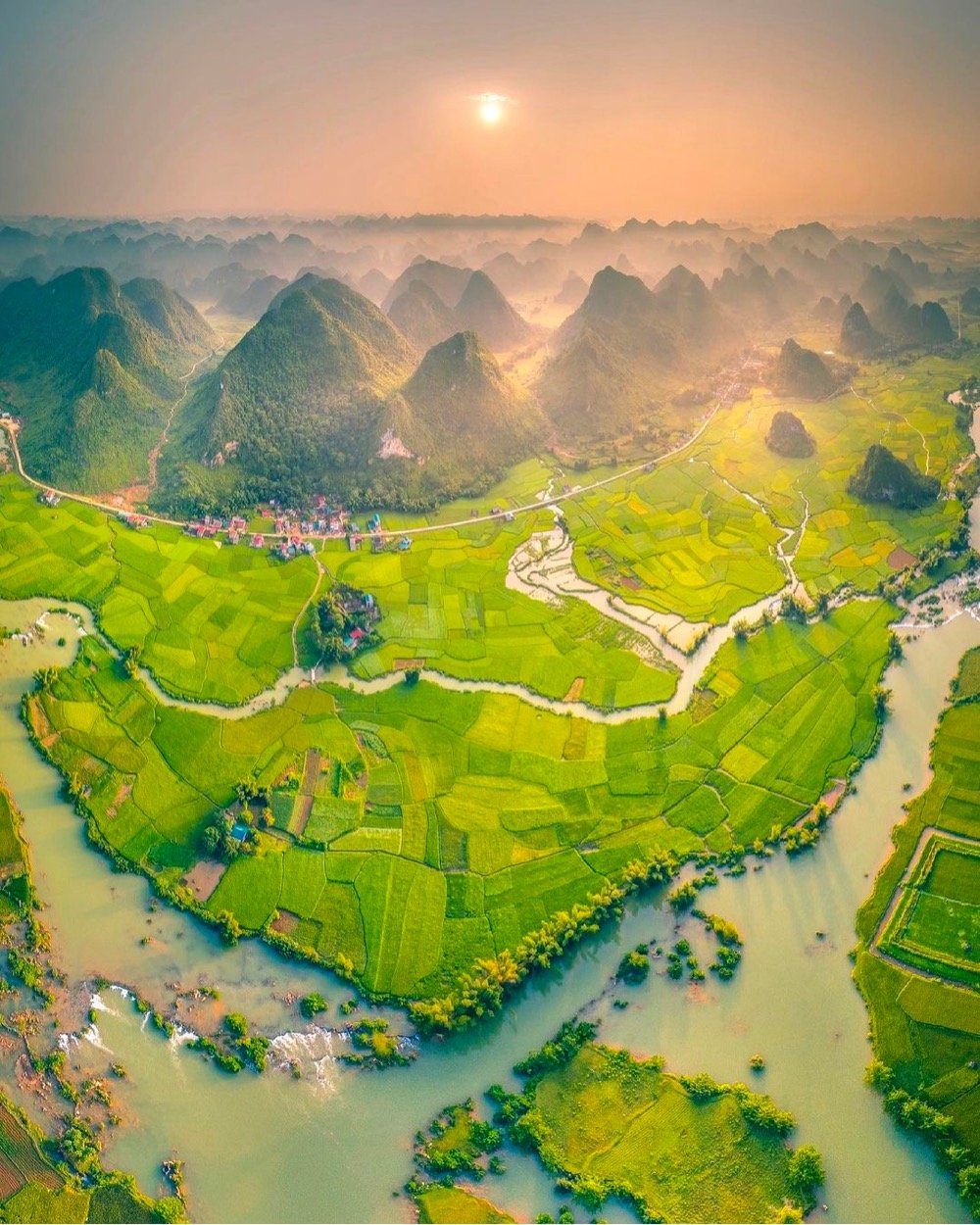
Stunning photo by Pham Huy Trung of Cao Bằng, Vietnam. When I first saw this on Instagram, I thought it was an illustration; it took several looks to convince myself it wasn’t.
The Texas Switch is a filmmaking technique in which an actor and stunt person are switched seamlessly during a single shot — the actor steps out of the frame or behind a prop and the stunt person steps in (or vice versa). The lack of cutting keeps the narrative going and helps to obscure the switcheroo. The video above contains many great examples of the technique.
See also some Texas Switches from James Bond movies. (via storythings)
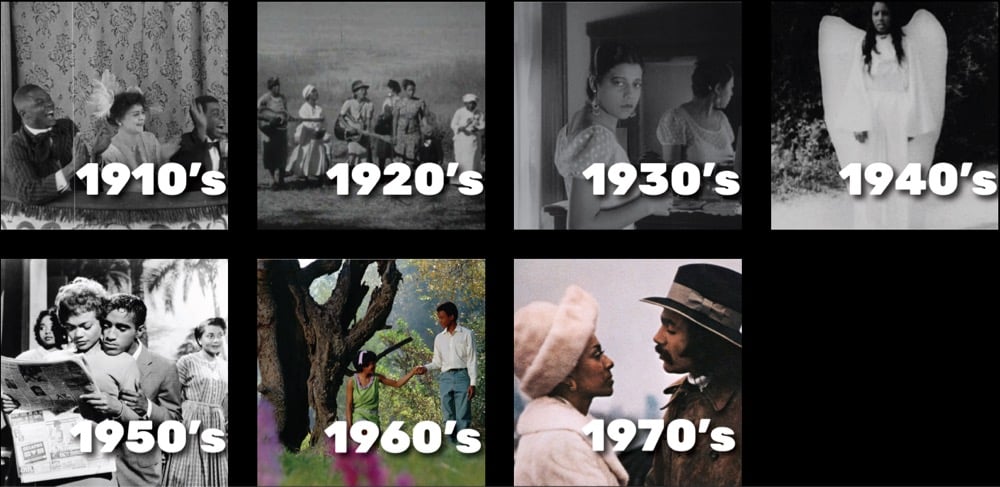
Black Film Archive is a collection of links to films made by Black filmmakers & actors from 1915 to 1979 that are available to stream online. Maya Cade writes about why she created this archive.
The films collected on Black Film Archive have something significant to say about the Black experience; speak to Black audiences; and/or have a Black star, writer, producer, or director. This criterion for selection is as broad and inclusive as possible, allowing the site to cover the widest range of what a Black film can be.
The films listed here should be considered in conversation with each other, as visions of Black being on film across time. They express what only film can: social, anthropological, and aesthetic looks at the changing face of Black expression (or white attitudes about Black expression, which are inescapable given the whiteness of decision-makers in the film industry).
Films, by their very nature, require a connection between creator and audience. This relationship provides a common thread that is understood through conventional and lived knowledge to form thought and to consider. Not every filmmaker is speaking directly to Blackness or Black people or has the intention to. Some films listed carry a Black face to get their message across. But presented here, these films offer a full look into the Black experience, inferred or real, on-screen.
What a great open resource — exactly what the internet is for. You can read more about the archive on Vulture and NPR.
Documentaries about mushrooms like Fantastic Fungi are interesting but it turns out that short documentaries about how mushroom documentaries are made are fascinating as well. For this short video, Wired talked to Louie Schwartzberg about how mushroom time lapses are filmed. I don’t know why I assumed they filmed these outside…of course they are done indoors to help control lighting, weather, and other factors (like rogue wildlife). And after decades of working on nature films, Schwartzberg has integrated his process deeply into his life:
I realized I’ve turned it into a spiritual practice. It actually literally gets me up in the morning because as soon as I’m out of bed, I’m thinking ooh, “I wonder what the flower did last night? Is it still in frame? Is it in focus?”
I have to imagine what the framing and the composition is going to look like tomorrow, or two days from now, or a week from now. That is a transformational experience because you have to put your mind into the mindset and the intention of the flower or the fungi, thinking where it’s going to grow, how big will it get. And if you’re right, boy, it’s a rush. If you’re wrong, it means you just gotta do it all over again.
This was surprisingly philosophical in parts.
A review of Swedish Chef’s new restaurant, Dorg Schnorfblorp Horganblorps. “A swordfish sailed past my head and smacked clumsily against the wall. ‘Herdy come da fishy wishy!’ Our chef had arrived.”
MoMA’s Online Courses Let You Study Modern & Contemporary Art and Earn a Certificate. Very tempting.
Bored of dying from Covid-19, Americans have dreamed up a more entertaining way to mortally wound themselves: the milk crate challenge. Wired asked structural engineer Dr. Nehemiah Mabry (who explained the different types of bridges to us earlier in the year) to explain the physics behind the challenge and why you shouldn’t attempt it. (via @pomeranian99)
Because of humans, most of the world’s oyster reefs have disappeared over the last 200 years. Now, some groups around the world are trying to put some of them back. In addition to providing water filtration and habitats for other animals, offshore oyster reefs can help slow long-term erosion by acting as living breakwater structures that partially deflect waves during storm surges.
In the last century, 85% of the world’s oyster reefs have vanished. And we’re only recently beginning to understand what that’s cost us: While they don’t look incredibly appealing from the shore, oysters are vital to bays and waterways around the world. A single oyster can filter up to 50 gallons of water every day. And over time, oysters form incredible reef structures that double as habitats for various species of fish, crabs, and other animals. In their absence, our coastlines have suffered.
Now, several projects from New York to the Gulf of Mexico and Bangladesh are aiming to bring the oysters back. Because not only are oysters vital ecosystems; they can also protect us from the rising oceans by acting as breakwaters, deflecting waves before they hit the shore. It won’t stop the seas from rising — but embracing living shorelines could help protect us from what’s to come.
(via the kid should see this)
Update: Check out the Billion Oyster Project if you’d like to get involved in returned oysters to New York Harbor. (via @djacobs)
Soothing, relaxing, meditative, mesmerizing — just a few of the ways to describe Yuki Kawae’s video of creating different patterns in his zen garden. I guess I could say more about it, but it’s pretty simple: if you want to relax and chill out for awhile, watch Kawae make patterns in the sand. (via colossal)
TIL that Michael K. Williams choreographed the dancing in the music video for Crystal Waters’ 100% Pure Love. Love that song.
As his name suggests, Jamaican street musician Brushy One String plays a one-string guitar and, under that constraint, makes some truly beautiful music. Josh Jones wrote about Brushy for Open Culture:
When Jamaican musician Andrew Chin, better known as Brushy One String first told friends about his vision — “a dream in which he was told to play the one-string guitar” — they responded with mockery — all but one, who “insisted it was fate,” writes Playing for Change, “and that he had to make that dream come true.” So Brushy set out to do just that, playing on street corners and in the market, “in a big broad hat and sunglasses,” he says. The music came to him naturally. He is no ordinary street musician, however, and his one-string guitar is not a gimmick. Brushy is a talented singer-songwriter, with a powerful voice and a musical sensibility that transcends his bare-bones minimalism.
In addition to his NPR Tiny Desk Concert above, this video of Brushy performing Chicken in The Corn on his one-string has been viewed over 50 million times.
See also Gasper Nali and His Homemade [One-String] Bass Guitar. Would love to see a duet with these two single stringers!
Yes. Yes. Yes. Yes. Yes. Yes. Yes. Yes. YES. YES. YES. YES. YES. YES. YES. YES. YES. YES. YES. YES. YES! YES! YES! YES! YES! YES! YES! YES! YES! YES! YESSSSSSS!!!!! YES! YES! YES! YES! YES! YES! YES!
YES!! YES!! YES!! YES!! YES!! YES!! YES!! YES!!!! YES!!!! YES!!!! YES!!!! YES!!!! YES!!!! YES!!!! YES!!!! YES!!!!
Yes. Fuck yes.
I keep tabs on a few trusted film school-ish YouTube channels and while I like when they cover films I’ve seen or those directed by my favorite directors, it’s more valuable when they introduce me to something new. Evan Puschak’s Nerdwriter is a particular favorite guiding light and in his latest video, he talks about Agnès Varda’s Cléo from 5 to 7, a film I now want to watch as soon as possible. A synopsis via Wikipedia:
Cléo from 5 to 7 follows a pop singer through two extraordinary hours in which she awaits the results of a recent biopsy. The film is superficially about a woman coming to terms with her mortality, which is a common auteurist trait for Varda. On a deeper level, Cléo from 5 to 7 confronts the traditionally objectified woman by giving Cléo her own vision. She cannot be constructed through the gaze of others, which is often represented through a motif of reflections and Cléo’s ability to strip her body of “to-be-looked-at-ness” attributes (such as clothing or wigs). Stylistically, Cléo from 5 to 7 mixes documentary and fiction, as had La Pointe Courte. The film represents diegetic action said to occur between 5 and 7 p.m., although its run-time is 89 minutes.
I’ve added Cléo from 5 to 7 to my HBO Max queue but you can also find it on Kanopy (accessible with a library card) and The Criterion Channel.
Steven Heller & Thilo von Debschitz celebrate the work of a prolific designer that you’ve probably never heard of: Joseph Caroff. Among other things, he designed the film poster for West Side Story and the James Bond 007 gun logo.
In one of their most popular videos in awhile, kottke.org favorite Kurzgesagt tells us about something I’d never heard of before: giruses. These giant viruses have only been discovered within the last 20 years and are so large and contain so much genetic material that maybe they are actually alive?
Hidden in the microverse all around you, there is a merciless war being fought by the true rulers of this planet, microorganisms. Amoebae, protists, bacteria, archaea and fungi compete for resources and space. And then there are the strange horrors that are viruses, hunting everyone else. Not even being alive, they are the tiniest, most abundant and deadliest beings on earth, killing trillions every day. Not interested in resources, only in living things to take over. Or so we thought.
It turns out that there are giant viruses that blur the line between life and death — and other viruses hunting them.
A collection of free, open source health icons. There’s over 1000 of them, including ones for devices, body parts, medical conditions, and vehicles.
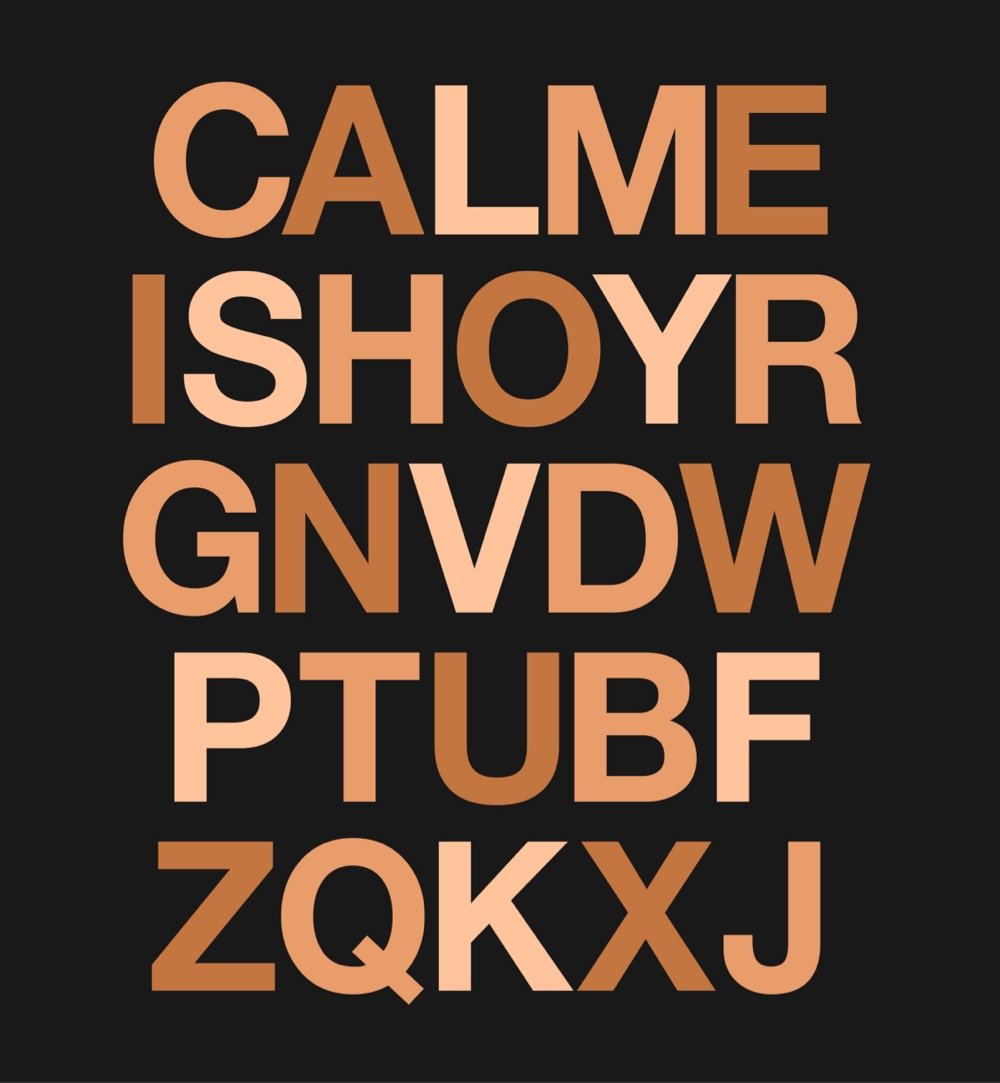

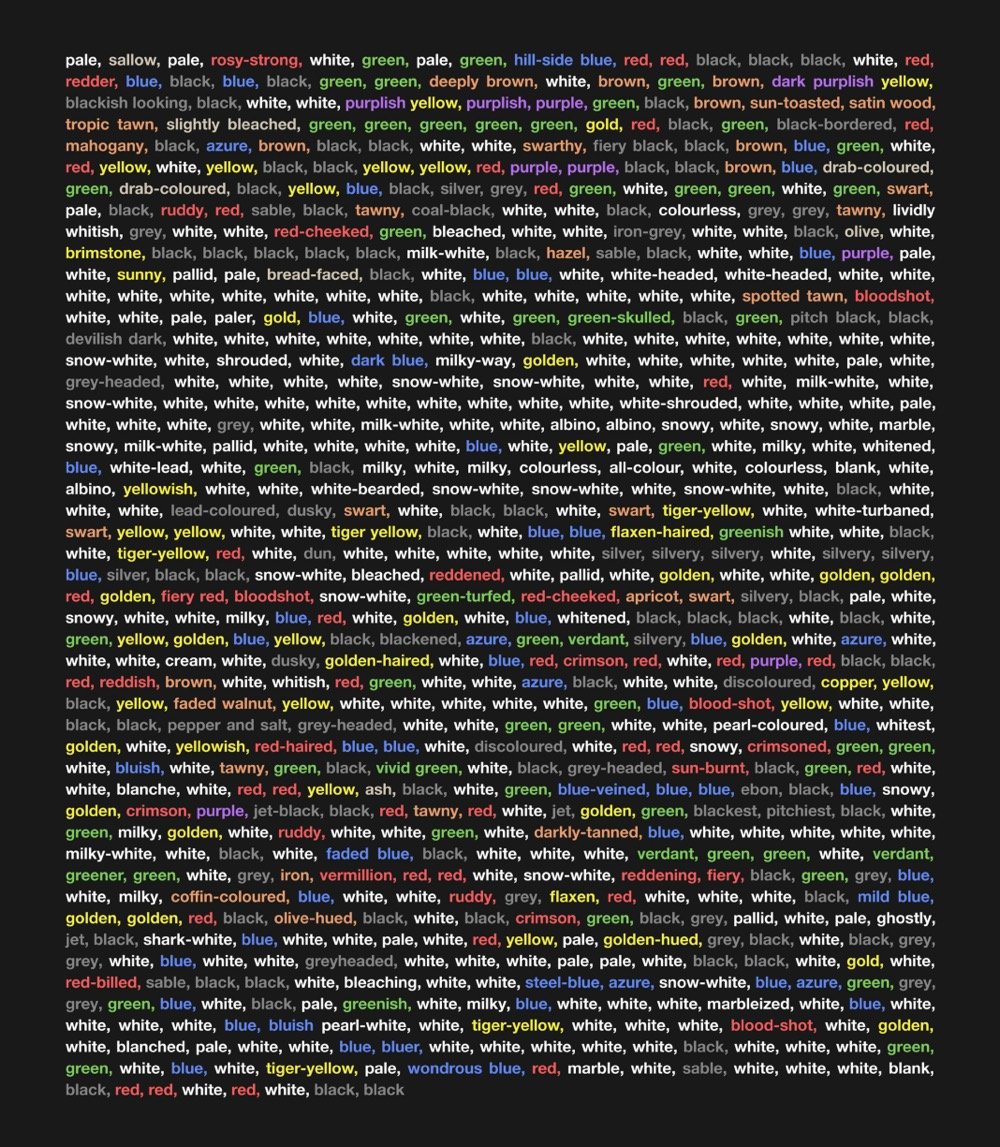
Peter Gorman of Barely Maps has published a wonderful little book called Kaleidoscope Brain that contains 100 visualizations of Moby-Dick. Gorman read Herman Melville’s masterpiece last year and made these maps & graphics to help him make sense of it.
I read Moby-Dick in April 2020. For weeks afterward, I couldn’t stop thinking about it. I started making maps and diagrams as a way to figure it out.
Moby-Dick is infamous for its digressions. Throughout the book, the narrator disrupts the plot with contemplations, calculations, and categorizations. He ruminates on the White Whale, and the ocean, and human psychology, and the night sky, and how it all relates back to the mystery of the unknown. His narration feels like a twisting-turning struggle to explain everything.
Reading Moby-Dick actually made me feel like that-like I’d mentally absorbed its spin-cycle style. I developed a case of “Kaleidoscope Brain.” The maps I was making were obsessive and encyclopedic. They were newer and weirder and they digressed beyond straightforward geography.
The book is available as a free download on Gorman’s Patreon — support his efforts if you find them valuable!
Above, from top to bottom: the letters of the alphabet in order of their appearance in the book, the constellation Cetus (aka “The Whale”), every color in the book.
School dress codes are sexist, racist, and classist. “They put the onus on girls to not be distracting or not call attention to themselves instead of putting the onus on all students to respect everyone’s body.”
In this short video, YouTuber Paul E.T. shows how you can make a Netflix-style true crime documentary about anything. Even stolen toast. The equipment needs are pretty minimal - a good camera, a couple of lenses, some lighting, and a decent mic. The magic is in the editing. (via my son’s insistence that I click on this while browsing YouTube on the TV last night)
For a second year, MIT’s biology department is offering their class on “COVID-19, SARS-CoV-2 and the Pandemic” featuring guests lecturers like Dr. Fauci and CDC director Rochelle Walensky. All the classes are free to stream and archived on YouTube.
Nantucket Doesn’t Belong to the Preppies. “Nantucket was once a place of working-class ingenuity and Black daring.”
Wes Anderson’s tenth film, The French Dispatch, is about a fictional magazine published by a group of Americans in France. The movie’s magazine is based on the New Yorker and in advance of its release, Anderson has published an anthology of articles from the actual New Yorker (and other magazines) that inspired the characters in the film. It’s called An Editor’s Burial.
A glimpse of post-war France through the eyes and words of 14 (mostly) expatriate journalists including Mavis Gallant, James Baldwin, A.J. Liebling, S.N. Behrman, Luc Sante, Joseph Mitchell, and Lillian Ross; plus, portraits of their editors William Shawn and New Yorker founder Harold Ross. Together: they invented modern magazine journalism.
Because the world is constantly folding in on itself these days, Anderson explained why he is publishing the book to Susan Morrison in the New Yorker:
Two reasons. One: our movie draws on the work and lives of specific writers. Even though it’s not an adaptation, the inspirations are specific and crucial to it. So I wanted a way to say, “Here’s where it comes from.” I want to announce what it is. This book is almost a great big footnote.
Two: it’s an excuse to do a book that I thought would be really entertaining. These are writers I love and pieces I love. A person who is interested in the movie can read Mavis Gallant’s article about the student protests of 1968 in here and discover there’s much more in it than in the movie. There’s a depth, in part because it’s much longer. It’s different, of course. Movies have their own thing. Frances McDormand’s character, Krementz, comes from Mavis Gallant, but Lillian Ross also gets mixed into that character, too — and, I think, a bit of Frances herself. I once heard her say to a very snooty French waiter, “Kindly leave me my dignity.”
As Morrison then noted, it would be very cool if every movie came with a suggested reading list. The French Dispatch is set for release in the US in late October and An Editor’s Burial will be out September 14 and is available for preorder.
Seinfeld theme in the style of Miles Davis’ Kind of Blue. Evil & genius.

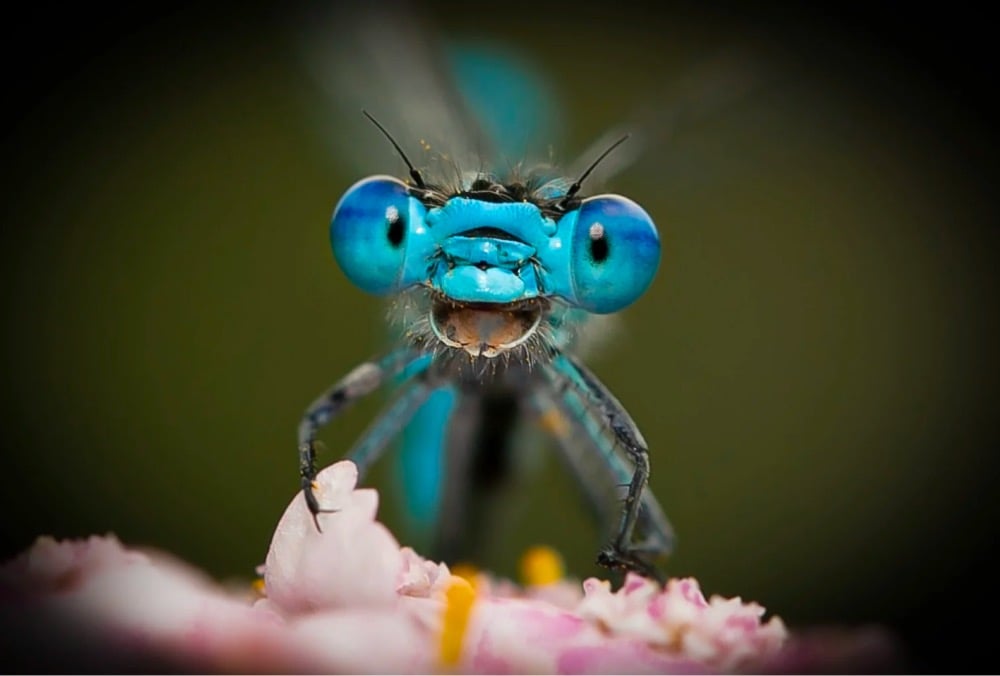

The Comedy Wildlife Photography Awards: always a bright spot in the world these days. This year, the thousands of photos have been narrowed down to 42 finalists, including the three very expressive animals above. Good luck to all the contestants — the winners will be announced in October.
Hidden structures in hairballs, and how to see them. I feel like I spent a lot of daydreaming time as a kid looking at groups of things trying to figure out if they were grouped or not.
From the New Yorker archive, a 2000 piece by Anthony Bourdain about 24 hours in the life of his restaurant, Les Halles. “For the weekenders, a saddle of wild hare stuffed with foie gras is not a good special.”


From Macedonian designer Fleta Selmani, a typeface called Impossible Type that was inspired by the impossible geometries of M.C. Escher.
See also more typefaces inspired by Escher’s work.
Female Hummingbirds Avoid Harassment by Looking Like Males. “Scientists found these [blue plumed] male look-alikes avoid harassment directed toward green females.”
Sally Rooney’s Beautiful World, Where Are You is out today! But boo, I don’t have time to get started on it until later in the week.
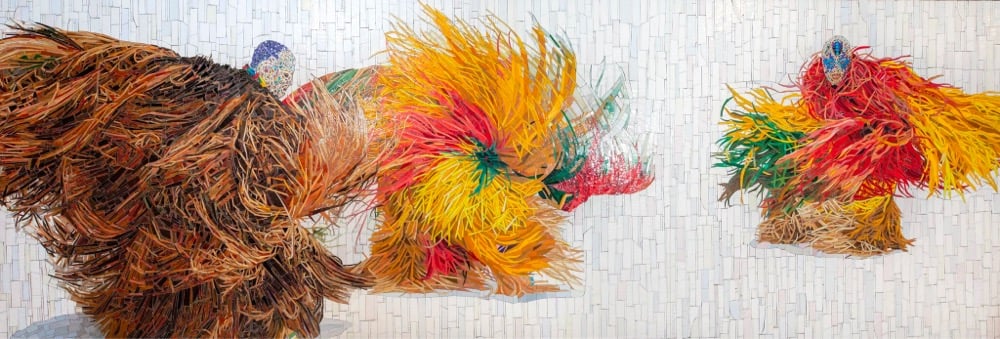

Oh, I really like this new NYC subway mosaic installed in the corridor between Times Square and Bryant Park designed by Nick Cave.1 It’s based on Cave’s Soundsuits project, full-body suits that “camouflage the shape of the wearer, enveloping and creating a second skin that hides gender, race, and class, thus compelling the audience to watch without judgment”. From a NY Times piece on the mosaic:
The Soundsuits have always been an amalgam of cultural references, Cave explained: the concepts of shamans and masquerade, obscuring the race, gender and class of the wearer and forging a new identity. They contain ties to Africa, the Caribbean and Haiti.
“It’s very important that you can make references, you can connect to something,” Cave said. “In one of the mosaics in the corridor, there’s a sneaker. So that brings it to this urban, right-now time.”
From beneath a pink-and-black cloak of raffia, carefully crafted out of glass shards, pokes a contemporary sneaker in shades of salmon, white and maroon. Cave likes the play that’s happening here: The form is sometimes figurative, sometimes abstract. “Sometimes it’s identifiable and sometimes it’s not,” he said. “But that’s the beauty of it all.”
(thx, caroline)
No, not that Nick Cave.↩
Why are hyperlinks blue? “WHO decided to make them blue? WHEN was this decision made, and HOW has this decision made such a lasting impact?”
Oh shit, Michael K. Williams has died at the age of 54. He was fantastic in The Wire, Boardwalk Empire, and many other things.
Oh My Fucking God, Get the Fucking Vaccine Already, You Fucking Fucks. “You want a two-month-old to wind up on a fucking ventilator instead of you, a fucking adult, getting a fucking sore arm for a day? What are you, a pitcher for the Yankees?”
Stay Connected